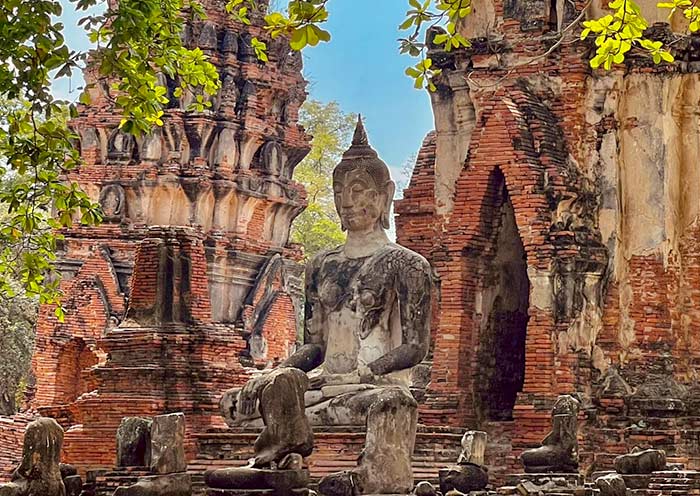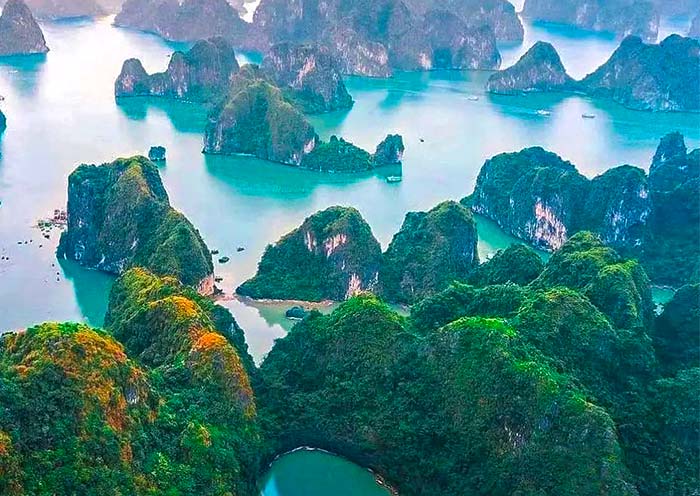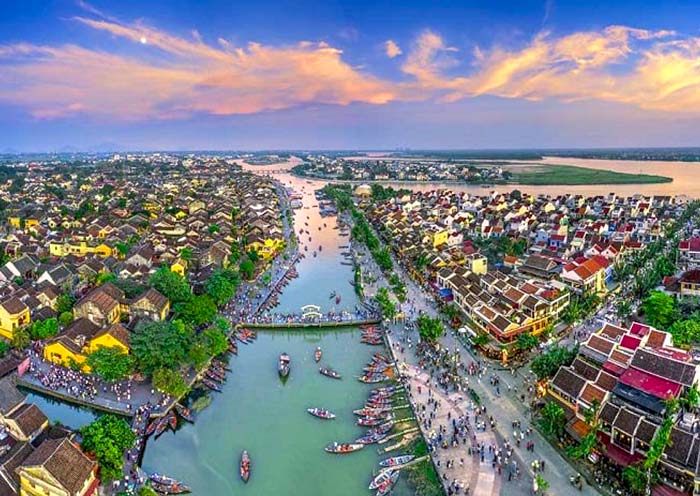We traveled with 7 lady friends. Our trip with Asia Odyssey Travel was so well planned, and seamless. Our time in Bhutan was exceptional, being led by Ugyan and Doji. What two very wonderful men. They were both so very knowledgeable, kind, and helpful. I cannot say enough good about our time in Bhutan with these two good men,...our guide and driver. Thank you Asia OdysseyTravel!!! p.s. Our trip was planned by Tony of Asia Odyssey. He was amazingly helpful, and planned our trip flawlessly! Thank you, Tony!
26 Days Southeast Asia In-depth Discovery Tour: Thailand Cambodia Laos Vietnam
- Highlights
- Itinerary
- Price
- Trip Notes
- Accommodation
- Photos
- Reviews
In-depth Discovery of Thailand Cambodia Laos Vietnam
Are you ready to truly immerse yourself in the magic of Southeast Asia? Our meticulously crafted 26-Day In-Depth Discovery Tour unlocks the hidden gems and best experiences across Thailand, Cambodia, Laos, and Vietnam.
This adventure is designed for those seeking a deeper connection with each nation. Spend 9 days exploring the vibrant markets, ornate temples, vibrant nightlife, and breathtaking beaches of Thailand. Immerse yourself in the bustling energy of Bangkok, delve into the cultural richness of Chiang Mai, and unwind on pristine islands.
Cambodia beckons with its awe-inspiring temples of Angkor Wat for 3 unforgettable days. Delve deeper into the country's captivating history and explore hidden ruins beyond the main complex.
Laos, known for its laid-back charm, welcomes you next. Spend 3 days discovering serene temples, vibrant local markets, and breathtaking natural beauty. Explore the UNESCO World Heritage Site of Luang Prabang, trek through lush jungles, and connect with the country's tranquil spirit.
Finally, embark on an in-depth exploration of Vietnam for 11 days. Cruise through the emerald waters of Halong Bay, a UNESCO World Heritage Site, explore the captivating city of Hanoi, and delve into the rich history and vibrant culture of the country. Venture beyond the tourist trail, discover hidden gems, and connect with the warmth of the Vietnamese people.
This perfectly-paced itinerary ensures you experience the best of Southeast Asia beyond the usual highlights. Don't miss this chance to create unforgettable memories on this immersive adventure!


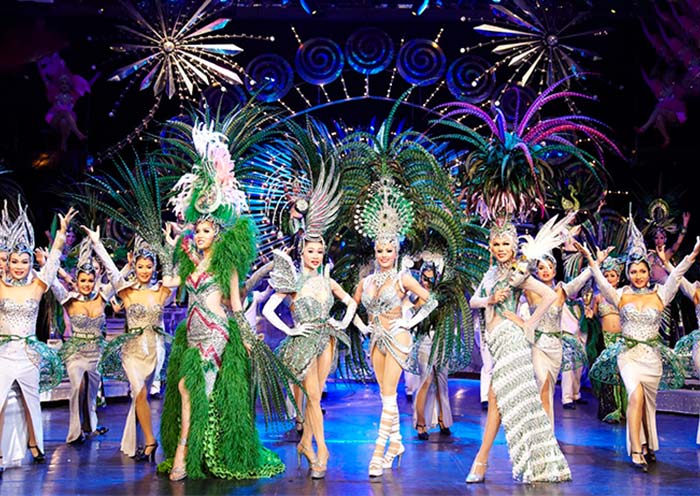
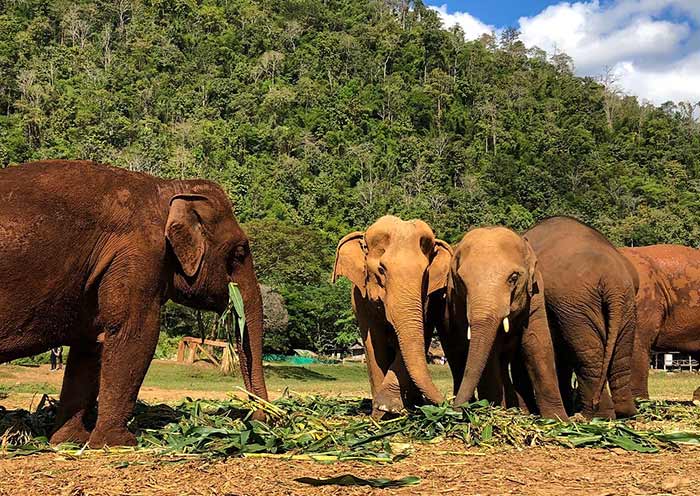
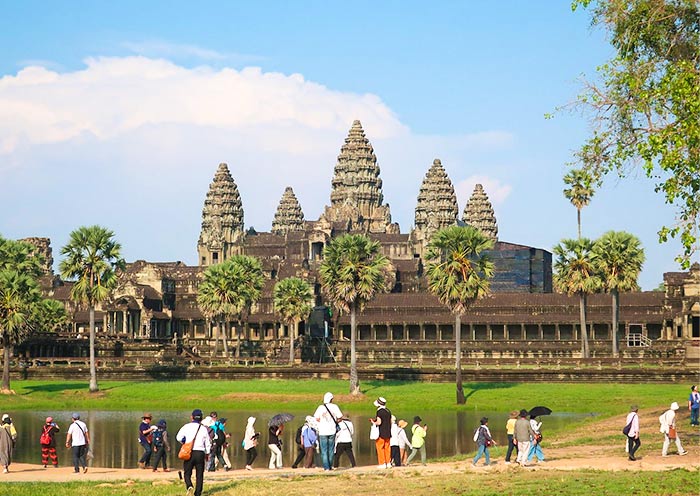
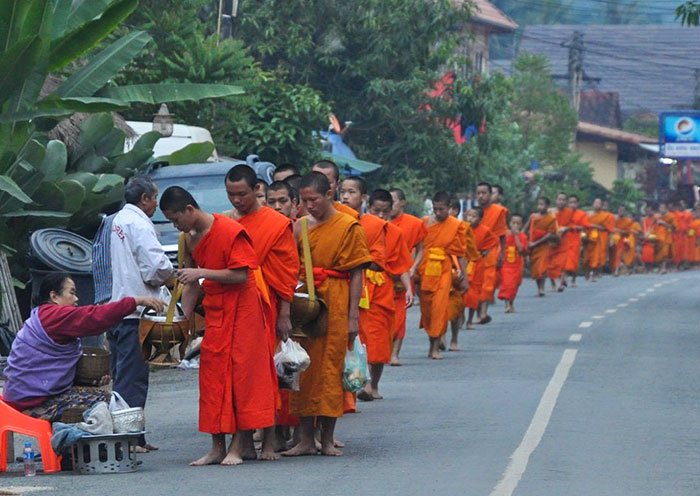
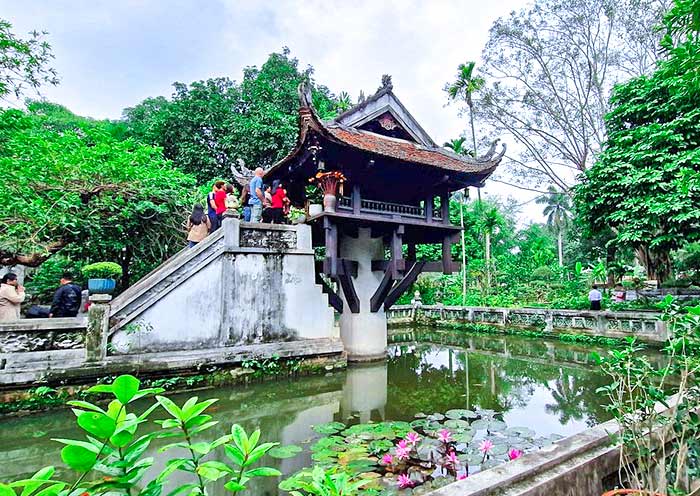
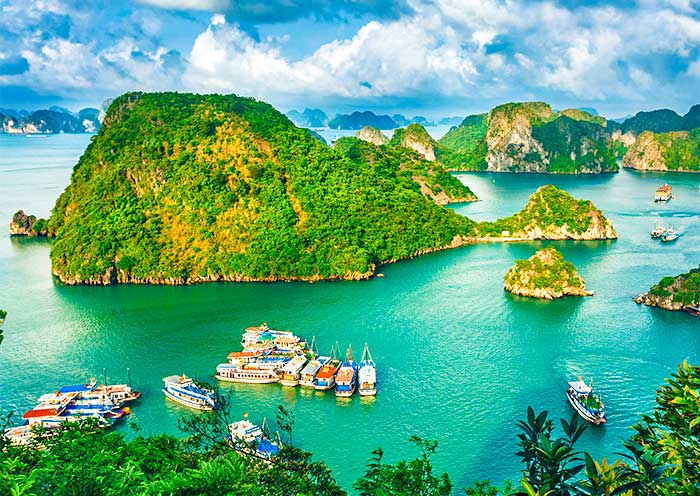
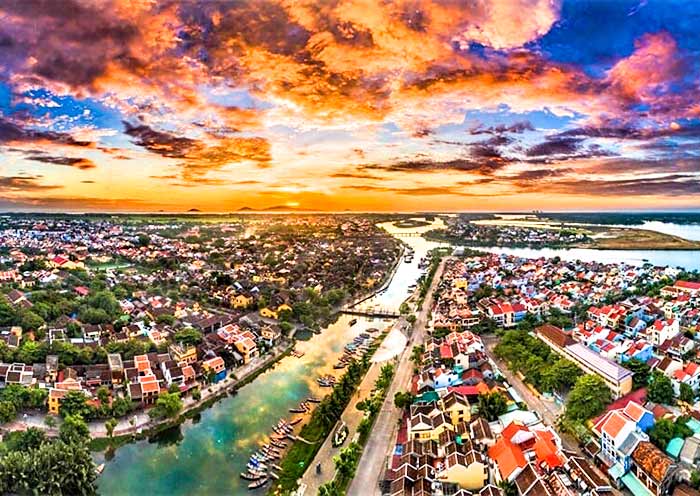
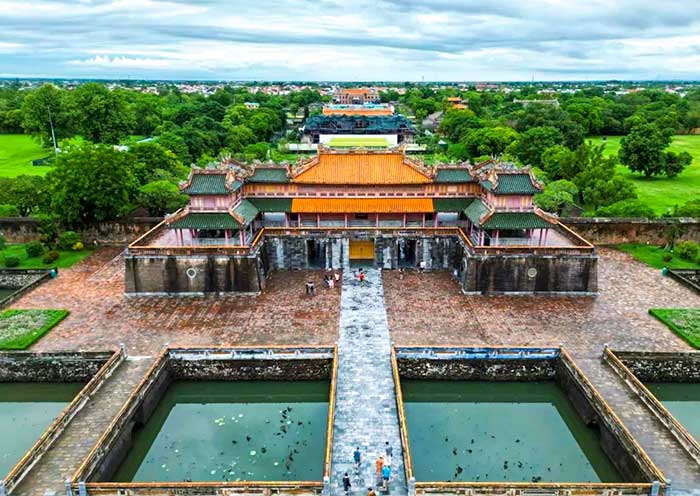


Itinerary at a Glance
Bangkok (2 Days)
Wat Phra Kaew, Grand Palace, Wat Pho, Wat Traimit, Chinatown, Wat Arun
Ayutthaya (1 Day)
Historic City of Ayutthaya, Wat Chaiwattanara, Wat Lokaya Sutha, Wat Phra Sri Sanpet, Wat Maha That, Wat Yai ChaiMongkhol, Ayutthaya Night Market, Bang Pa-In Royal Palace
Pattaya (2 Days)
Free exploration on your own; and you can choose to take island hopping to Koh Larn; enjoy Cabaret Show, Muay Thai fights; the Sanctuary of Truth Museum, Ripley's Believe It or Not!, Wat Phra Yai, Pattaya Floating Market, Dongba Paradise, Qizhen Fanshan
Bangkok (0.5 Day)
Fly to Chiang Mai
Chiang Mai (2.5 Days)
Elephant Nature Park or Elephant Jungle Sanctuary, Chiang Mai Cooking Class (Optional), Chiang Mai Night Safari (Optional), Chiang Mai Old City, Tha Phae Gate, Wat Phra Singh, Wat Chedi Luang
Siem Reap, Angkor Complex (3 Days)
Angkor Thom, Angkor Wat & Sunrise, Phnom Bakheng & Sunset, Ta Prohm, Banteay Srei, Beng Mealea
Luang Prabang (3 Days)
Old Town of Luang Prabang (World Heritage Site), Royal Palace Museum, Mount Phousi Sunset, Alms-giving Ceremony, Morning Market, Kuang Si Waterfalls, Wat Xieng Thong, Mekong River Sunset
Hanoi (2 Days)
Tran Quoc Pagoda, Ho Chi Minh Mausoleum, One Pillar Pagoda, Temple of Literature, Vietnam National Museum of History, Hoan Kiem Lake, cyclo tour to old quarter, Water Puppet Show (Optional)
Halong Bay (1.5 Days)
Halong Bay, Halong Bay Cruise, Visit Sung Sot Cave, Titop Island, Trinh Nu Cave
Da Nang (0.5 Day)
Fly to Da Nang from Hanoi
Hoi An (2 Days)
Hoi An Ancient Town, Cam Thanh coconut basket boat trip
Hue (1 Day)
Hai Van Pass Tunnel, Hue Imperial City, Mausoleum of Emperor Khai Dinh, Thien Mu Pagoda, Dong Ba Market
Ho Chi Minh City (2 Days)
Fly to Ho Chi Minh City from Da Nang; War Remnants Museum, Reunification Palace, Central Post Office, Nha Tho Tan Dinh (Pink Church), Cu Chi Tunnels, Jade Emperor Pagoda
Mekong Delta (1 Day)
Vinh Trang Pagoda, My Tho boat trip, Ben Tre boat trip & cycling tour
Ho Chi Minh City (1 Day)
Depart from Ho Chi Minh City
Itinerary Day by Day
Sawatdee Krap/Kha! Welcome to Bangkok, the capital city of Thailand! Upon your arrival at the airport in Bangkok, the tour guide and driver will meet you at the exit and then escort you to the hotel in downtown Bangkok. You can have a good rest in your hotel and get ready to explore Bangkok with your guide the next day.
Bangkok means the "City of Angels" in translation from its ceremonial Thai name, Krung Thep Maha Nakhon. It is a vibrant metropolis known for its bustling markets, ornate temples, and delicious Thailand street food. You can indulge in Bangkok's diverse culinary scene, from street eats to upscale dining. Shop till you drop in luxury malls or explore local markets. Enjoy the city's lively nightlife, rooftop bars, and live music venues. Bangkok offers a blend of tradition and modernity, making it an exciting and captivating destination.
Free Time Ideas:
- You can watch a Thailand boxing game at Rajadamnern Stadium.
- Unwind with a traditional Thai massage or spa treatment.
Arrival Ideas:
Bangkok, the capital city of Thailand, serves as a significant international hub with direct flights from various cities worldwide. Major cities offering direct flights to Bangkok include London, Dubai, Singapore, Kuala Lumpur, Ho Chi Minh City, Doha, Taipei, Hong Kong, Frankfurt, Paris, Helsinki, Beijing, New York, Los Angeles, Tokyo, and Sydney. Many cities in Thailand, such as Chiang Mai (Chiang Mai International Airport), Phuket (Phuket International Airport), Krabi (Krabi International Airport), and Koh Samui (Samui International Airport ), also have direct flights to Bangkok's main airports, Suvarnabhumi Airport (BKK) and Don Mueang International Airport (DMK). Flight availability and routes can vary based on airlines, seasons, and other factors. It is recommended to consult airlines or our travel consultant for the most up-to-date information regarding direct flights to Bangkok from your specific location.
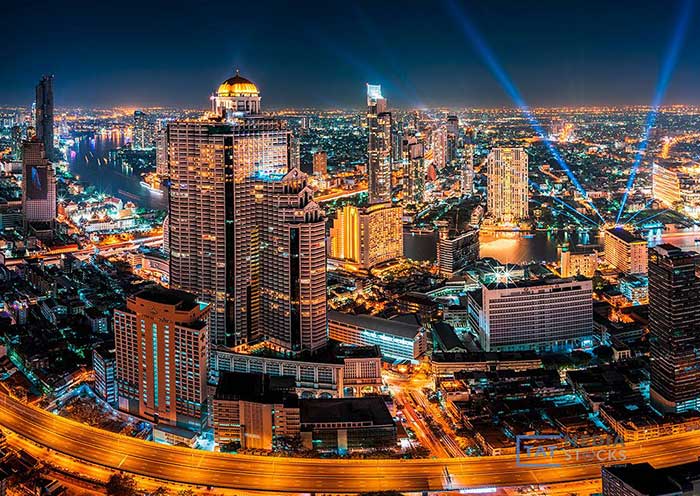

Today, you will explore the Top 6 must-visit places in Bangkok: Wat Phra Kaew, Grand Palace, Wat Pho, Chinatown, Wat Traimit, and Wat Arun. You see “Wat” means “Temple” in Thai language. You will also experience a Thai tuk-tuk, take a ferry or boat ride on the Chao Phraya River, and indulge in local food in Chinatown. This is a classic Bangkok trip, allowing you to witness 3 treasures of Thailand: the jade Buddha, the reclining Buddha, and the golden Buddha.
In the morning, head to Wat Phra Kaew which was built in 1782 and is located in the northeast corner of the Grand Palace in Bangkok. Covering one-fourth of the Grand Palace's area, Wat Phra Kaew is the most famous royal Buddhist temple in Thailand. This temple is renowned for enshrining one of three national treasures of Thailand, the Emerald Buddha, which is carved from a single block of Emerald. Each year, the Thailand King personally changes the Buddha's robes according to Thailand's three unique seasons. Each season changes with a certain robe: a gold robe embedded with rubies for the hot season, a gold robe embedded with sapphires for the rainy season, and a pure gold robe for the cool season. Don’t forget to check which robe the Emerald Buddha wears when you are there.
On the walls surrounding the cloisters of Wat Phra Kaew, there are a total of 178 murals (1,000m in length). Painted during the reign of King Rama I, the first monarch of the Chakri Dynasty in 18th-century Thailand (Bangkok Dynasty), the murals depict scenes from the Indian mythological epic "Ramayana," which narrates the story of King Rama joining forces with the monkey deity Hanuman to defeat the demon king Ravana and rescue the exquisite princess Sita. It is said that the story of the "Journey to the West" is also based on this legend. All the murals were created by royal court painters and the golden pigments used were made entirely from gold, resulting in exquisite and unparalleled artwork.
With the guidance of your tour guide, you can learn about the mythical creatures within Thai Buddhist architecture. For example, there is the Garuda, a mythical bird and guardian deity of Buddhism, perched on the rooftops. At the entrance of the temple, you'll find Yaksa, a protective deity, and outside the halls, there are statues of Kinaree, a mythical half-bird, half-human creature. The base of the pagoda is adorned with statues of Hanuman, the monkey deity.
After visiting Wat Phra Kaew, you can go on a visit around the Grand Palace. The Grand Palace, which was first established in 1782, was constructed as a replica of the old palace in the former capital city of Ayutthaya. It serves as a symbol of the Bangkok Dynasty and is the most well-preserved, largest, and most distinctive palace in Thailand. The Grand Palace is currently used for coronation ceremonies, royal celebrations, and hosting foreign dignitaries. From King Rama I to King Rama VIII, all the monarchs of the Bangkok Dynasty resided in the Grand Palace. However, after an assassination incident in 1946 involving King Rama VIII, King Rama IX moved to a new residence. The Bangkok Dynasty has continued to the present day, with the current monarch being King Rama X.
The Grand Palace complex consists of 22 buildings and is elegantly situated along the banks of the Chao Phraya River. The main structures are four distinct palaces (Borombhiman Hall, Amarindra Hall, Chakri Mahaprasat, Dusit Hall), showcasing the essence of Thai architecture, painting, sculpture, and interior decoration. It is often referred to as the "Encyclopedia of Thai Art". By the way, the Thai King is considered the incarnation of the god Vishnu, and Garuda is Vishnu's guardian. As a result, sculptures of the Garuda (stepping on 2 serpents) can be found on door lintels, eaves, and walls, with a total count exceeding several hundred. Witnessing the changing of the guards' ceremony is a bonus when visiting the Grand Palace.
Then, visit Wat Pho (Temple of the Reclining Buddha) which is a 10-minute walk from the Grand Palace. As the oldest and largest temple in Bangkok, Wat Pho houses the largest reclining Buddha and the highest number of Buddha images and stupas in the city. The reclining Buddha, one of three national treasures of Thailand, is 46 meters tall and 108 meters long, depicting the scene of the Nirvana of Gautama Buddha. Within the temple grounds, there is a Bodhi tree, believed to be the spot where the Buddha meditated. The temple is adorned with about 100 stupas, with the most magnificent being the four stupas which are decorated with blue, white, yellow, and green ceramic tiles. In the courtyard, you can also see many Chinese-style stone sculptures, such as door guardians and lions, which were traditionally used on ships for ballast and protection against evil spirits.
Wat Pho is regarded as Thailand's first university and is considered the birthplace of Thai medicine and traditional Thai massage. It still houses a private school established in 1957 that teaches traditional Thai medicine and offers authentic Thai massages (optional, self-pay).
Head to Chinatown Bangkok for lunch. Chinatown Bangkok (Yaowarat) is renowned as one of Bangkok's liveliest and most bustling commercial areas, with reportedly 70% of the city's gold shops located in Chinatown. It is also home to Wat Traimit, the world's largest solid gold Buddha statue. The entire street of Chinatown stretches for about 2 km, lined with numerous shops, and thousands of businesses proudly displaying eye-catching Chinese signs. You may have watched the film Detective Chinatown, which was filmed in Chinatown Bangkok which has a history of over 200 years. You can search for the hidden shops that appeared in the film while enjoying the food in Chinatown, a haven for foodies. The restaurants and food stalls here provide a rich selection of Chinese, Thai, and other Asian delicacies. From classic pad thai to exotic grilled meats, there's something for everyone.
After lunch, visit Wat Traimit (Temple of the Golden Buddha). Built in 1785, it is renowned for housing the world's largest gold Buddha. The gold Buddha (one of three national treasures of Thailand) inside the temple weighs 5.5 tons and stands at a height of 3 meters. It was constructed with the contributions of 3 Chinese individuals, hence it is also known as the Three Chinese Temple or Three Friends Temple. The royal family holds annual ceremonies here to welcome the New Year. Unlike other temples, photography is allowed inside the temple hall in designated areas(video recording is not permitted). From fourth floor of the Wat Traimit, you can enjoy a distant view of the tallest building in Thailand (314m), the King Power Mahanakhon (Pixel Tower).
In the afternoon, take a tuk-tuk ride to the pier via a quick stop at Pak Khlong Talat Flower Market, also known as Bangkok Flower Market, which is one of the top 9 flower markets in the world. Then, take a ferry or boat (cruise; optional) on the Chao Phraya River to view Wat Arun (outside view). The Chao Phraya River divides Bangkok into two parts, and many famous temples are concentrated along its banks. The Wat Arun, is one of the most prominent temples that stands on the river's edge, complementing the Grand Palace on the opposite side. (Note: Due to the hot weather and the presence of numerous steps at Wat Arun, many of our guests opt to take a boat trip and enjoy the view of Wat Arun from the outside, either from the boat itself or from the opposite side.)
Built in 1809, Wat Arun was established to honor King Taksin (郑信), the 41st monarch of Thailand (1767-1782) and a national hero. During the invasion of the Burmese army, King Taksin led the Thai people in a brave resistance, successfully driving out the Burmese and establishing the Thonburi Kingdom. To commemorate this Chinese-Thai king (from Guangdong), the temple was named Wat Arun, meaning "Temple of Dawn", as the battle took place at dawn. The main stupa of the temple stands at a height of 79 meters and is often referred to as the Thai version of the Eiffel Tower. In contrast to many other magnificent temples adorned with gold, Wat Arun stands out with its elegant white structure, attracting numerous visitors who come to rent traditional Thai costumes for photography. Situated by the Chao Phraya River, Wat Arun (Temple of Dawn) also offers a captivating view of the sunset, which is another reason why people flock to this location.
After that, you can enjoy your free time such as paying a visit to the Khao San Road for the night markets that offer a dazzling array of street food, souvenirs, and clothing.
Warm Tips:
- When entering the Grand Palace or temples, it is prohibited to wear shorts or skirts that do not cover the knees. Shoulders and midriffs should be covered, and clothing should not be excessively tight or have holes.
- 2.Upon entering a temple, remove your hat and shoes. Photography is prohibited inside the temple halls. The use of drones is strictly prohibited within the royal grounds.
- Do not enter unauthorized areas or areas marked with warning signs. Unauthorized photography or videography is prohibited in restricted areas.
- The lights of Wat Arun usually turn on around 7 PM. For sunset, it is recommended to arrive Wat Arun around 5:30 PM, do double check with your guide for the sunset time based on your travel schedule. It is said that the best spot to capture the beauty of Wat Arun is in the alley across from Wat Pho, where a restaurant is located.
- Opening Hours for Temples (Wat):
Wat Phra Kaew : 8:30 AM - 3:30 PM
Wat Pho: 8:00 AM - 6:30 PM
Wat Traimit: Thursday to Sunday, 8:00 AM - 5:00 PM
Wat Arun : 8:00 AM - 6:00 PM
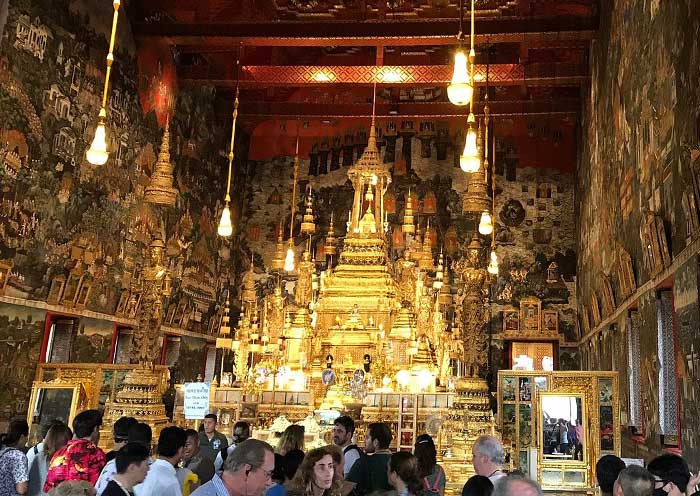
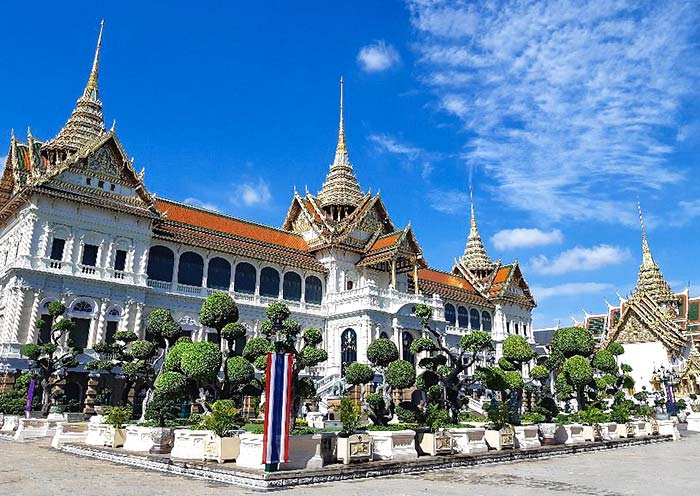
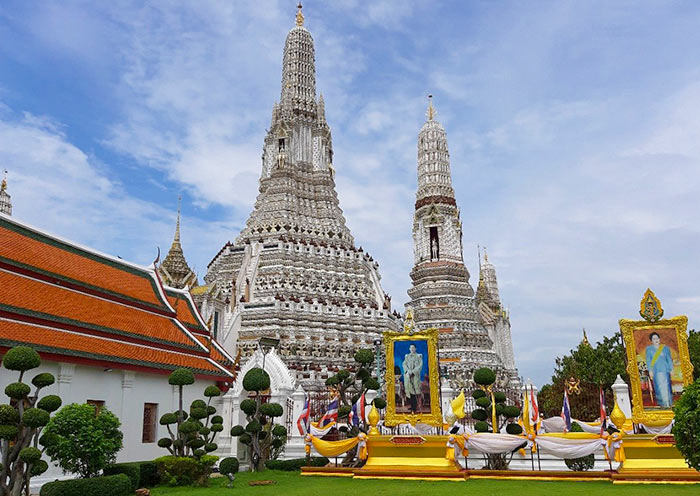
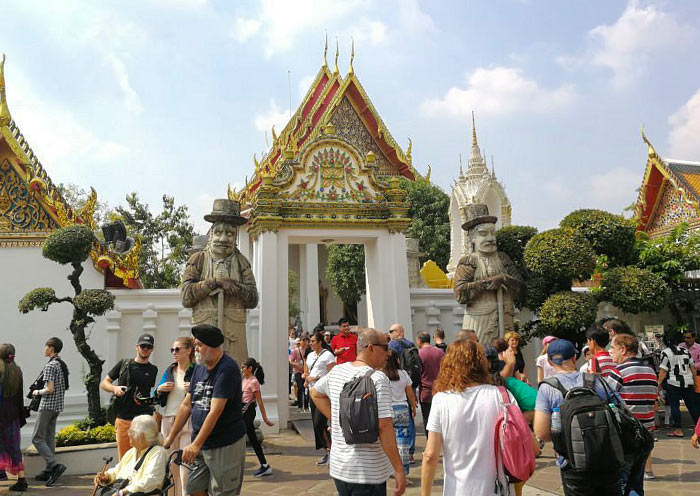
On this day, you will drive from Bangkok to Ayutthaya. Welcome to Ayutthaya, founded in 1350, the second capital of the Siamese Kingdom. It flourished from the 14th to the 18th centuries, during which time it grew to be one of the world’s largest and most cosmopolitan urban areas and a center of global diplomacy and commerce. Today, the Ayutthaya Historical Park is a sprawling archaeological site with the ruins of temples, palaces, and monasteries, offering a glimpse into the city's glorious past.
Upon arrival in Ayutthaya, we'll enjoy an amazing exploration. Visit Wat Chaiwattanara, a temple known for its unique row of prang towers lining the banks of the majestic Chao Phraya River. The temple's design is said to be influenced by Khmer architecture, and it boasts breathtaking river views.
Next, we head to Wat Lokaya Sutha, where you'll witness the awe-inspiring Phra Buddhasaiyart statue. This colossal reclining Buddha stretches an impressive 42 meters in length and 8 meters in height. It's a magnificent depiction of the Buddha entering Nirvana, a state of perfect peace and enlightenment.
Our journey continues at Wat Phra Sri Sanpet, the largest temple ruin in Ayutthaya and its most recognizable landmark. This former grand royal temple complex is now a powerful symbol of the city's past glory, dominated by three ruined prang towers.
Our exploration then takes us to Wat Maha That. Here, one of the most photographed sights awaits: the head of a stone Buddha image embraced by the roots of a fig tree. This evocative image stands as a testament to the enduring presence of Buddhism despite the passage of time.
Our last stop is Wat Yai ChaiMongkhol, renowned for its colossal 28-meter reclining Buddha draped in saffron robes. A towering stupa also graces the temple grounds. This site is further enriched by a collection of Buddha statues, with their heads and bodies sculpted in different eras, showcasing the artistic evolution throughout history. As we wander through these ruins, we appreciate the craftsmanship and design of a bygone era.
After the tour, drive back to Bangkok (about 1-1.5 hours’ drive).


In this morning, depart from Bangkok to Pattaya (a resort city located on Thailand's eastern Gulf coast, approximately 160 kilometers south of Bangkok in Bang Lamung District, Chonburi Province) - the journey takes about 2 hours. Stay overnight in Pattaya.
Pattaya offers a delightful mix of relaxation and excitement, making it a perfect destination for a 1-2 day getaway. You will explore it on your own (if you'd prefer a guided tour, just let us know). There are three highlights for Pattaya:
(1) Island Hopping: For a change of scenery, spend a day exploring the nearby islands like Koh Larn. Enjoy snorkeling, swimming, or simply relaxing on the pristine beaches.
(2) Nightlife & Shows: Immerse yourself in Pattaya's vibrant nightlife scene. Walking Street, the most popular area, boasts a wide variety of bars, clubs, and go-go shows to cater to different preferences.
(3) Unwind on the Beaches: Dedicate a day to soaking up the sun on Pattaya's beaches. While there, consider exploring the impressive Sanctuary of Truth, a wooden temple complex showcasing intricate carvings, or Wat Phra Yai, a majestic golden Buddha statue.
Enjoy One-day Island Hopping Tour to Koh Larn (Optional):
Today, make the most of your full day in Pattaya by exploring Koh Larn! Your island adventure begins with a scenic 0.5-hour speed boat ride from Baili Hai Pier in Pattaya to Tawaen Beach, the picturesque haven of Koh Larn. Here, you can choose to relax on the beach or take watersports - tailor your activities to your interests and create a truly memorable day on Koh Larn!
Beach Bliss on Koh Larn:
- Samae Beach: The island's longest stretch of sand, perfect for water sports enthusiasts with options like jet skiing, parasailing, and banana boat rides.
- Nual Beach: Escape the crowds and find tranquility on this smaller, secluded beach offering a laid-back atmosphere.
Dive into Adventure on Koh Larn:
- Snorkeling & Diving: Discover a vibrant underwater world teeming with colorful fish and coral reefs.
- Watersports: Get your adrenaline pumping with motorboat, jet skiing, parasailing, banana boat rides, water slide, or kayaking.
After your relaxing boat ride back to Pattaya, consider exploring the vibrant nightlife scene. Walking Street, a pedestrian-only area, is packed with bars, nightclubs, and go-go bars.
For a fun and unique cultural experience, we recommend enjoying a Cabaret Show. These shows feature elaborate costumes, music, and dance performances by talented transgender performers. The Alcazar Cabaret Show is a Pattaya institution and the longest-running and most famous show in the city. With stunning costumes, elaborate sets, and high-energy performances, it's a guaranteed crowd-pleaser. (Note: Show Timings: 17:00, 18:30, 20:00 & 21:30 hrs. Be sure to book your tickets in advance, especially during peak season.)
Later in the evening, you can head to one of Pattaya's many Muay Thai gyms or stadiums, like the famous Max Muay Thai Stadium, to witness professional Muay Thai fights held every night of the week.

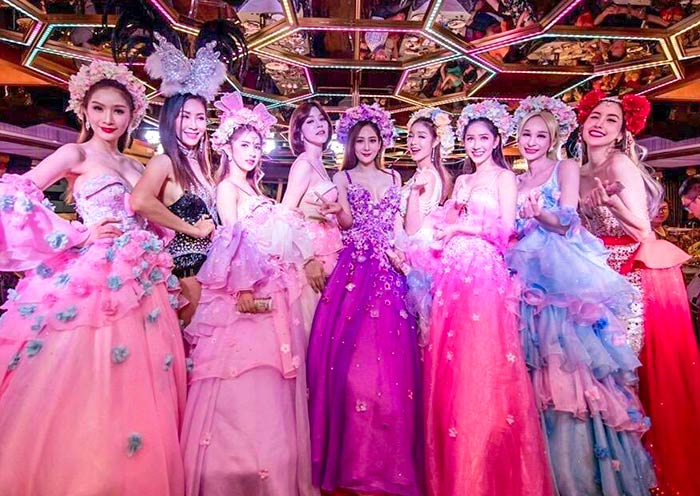
After breakfast, enjoy some free time exploring Pattaya at your own pace. (If you'd prefer a guided tour, just let us know!)
Free Time Ideas for One-day Exploration:
Kick off your day with a visit to the Sanctuary of Truth Museum, a must-see attraction in Pattaya. This massive wooden structure features intricate carvings and sculptures that depict stories from Thai mythology and Buddhist teachings.
Next, prepare for a mind-bending experience at Ripley's Believe It or Not! This museum overflows with oddities, curiosities, and unbelievable exhibits from around the world. It's a fun and quirky place for visitors of all ages.
Afterwards, enjoy a short walk to Wat Phra Yai, the iconic golden Buddha statue. Climb the stairs to the temple's peak and enjoy panoramic views of Pattaya and the surrounding area.
In the afternoon, explore the lively Pattaya Floating Market, also known as the Four Regions Floating Market. This unique market blends shopping, cultural experiences, and a chance to indulge in a variety of delicious Thai street food and local delicacies. From classic pad thai and sweet mango sticky rice to fresh seafood dishes, there's something to tantalize every taste bud. After exploring the market, treat yourself to a relaxing Thai massage offered by some vendors.
Other Adventures: If you're seeking more fun, Dongba Paradise and Qizhen Fanshan offer exciting options to consider.
After the tour, you will be transferred back to Bangkok for accommodation.
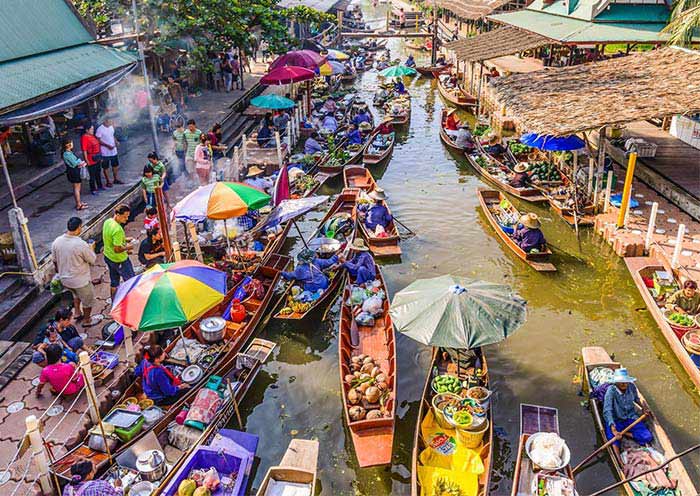
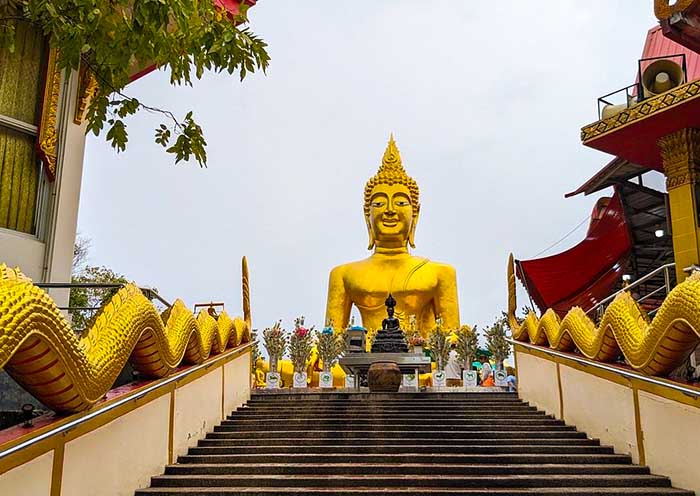
This morning,you will have some free time in Bangkok and explore more on your own till your guide or driver escorts you to the airport for your flight to Chiang Mai.
If you like you can take a morning tuk-tuk ride to visit Pak Khlong Talat Flower Market (optional), also known as Bangkok Flower Market, which is one of the top 9 flower markets in the world. This Flower Market is a must-visit destination for a sensory feast. This vibrant market immerses you in a kaleidoscope of colors and fragrances, offering an unforgettable experience. Beyond flowers, the market offers glimpses of local life, with lively activity and bustling vendors. Open 24/7, it accommodates all schedules, allowing early risers and night owls to indulge in its charm. Capture unique photos amidst the vibrant displays, and explore stalls selling fruits, vegetables, and floral supplies.
Then, head to airport for your flight to Chiang Mai (1h15m). The Chiang Mai Airport is only 3km away from the Chiang Mai Ancient City. Check-in at your hotel in Chiang Mai and have a good rest.
Chiang Mai is the second largest city in Thailand and was the capital of the independent Lanna Kingdom until 1558, the first kingdom in Thai history. It is renowned for its rich history, numerous temples, and unique culture. Chiang Mai is also known as the "Rose of the North" and offers a slower pace of life. People from all over the world flood here to get close to elephants through various Elephant Sanctuaries, experience local life through Thai Cooking Classes, and enjoy a vibrant atmosphere through its Walking Street Market and Night Bazaars around Chiang Mai Old City.
If time permit, you can spaned Half day Citywalk in Chiang Mai Old City (Optional) to explore Chiang Mai’s stunning Temples (Wat Phra Singh, Wat Chedi Luang, Wat Phan Tao), vibrant culture, and a laid-back atmosphere. It's a place for Architecture and culture lover. After your Chiang Mai trip, you may understand why Chiang Mai was Teresa Teng's (邓丽君) favorite city.
For the Half day Chiang Mai Old City tour (Optional), you will enter Chiang Mai Old City by the Tha Phae Gate, which is the landmark of Chiang Mai. The Old City is a square measuring 1.5 kilometers in length and 1.5 kilometers in width, surrounded by a moat. It is the most complete and well-preserved city gate, constructed in the early 13th century, remaining from the ancient walls that once surrounded the Old City. It served as a defensive structure against invaders and a gateway to the Lanna Kingdom. The area around the gate is always bustling with activity, especially during festivals like Loy Krathong and Yee Peng Lantern Festival (Sky Lantern Festival; Nov. or Dec.).
There are around 30 temples within the Chiang Mai Old City walls today. You will visit Wat Phra Singh, one of the three major temples in Chiang Mai, is the largest and most revered temple in the ancient city. It was originally built in 1345 when the fifth king of the Mangrai dynasty constructed a stupa to enshrine his father's ashes. Over time, it was expanded to its present scale. The temple, named after a famous Buddha image called Phra Singh (Lion Buddha), showcases stunning Lanna architecture, a unique blend of Thai, Burmese, and Mon styles. In the center of the temple stands a large golden pagoda, approximately 20 meters high, built in the 16th century, which is said to house the relics of Gautama Buddha. Wat Phra Singh is also one of the main locations for locals to celebrate the Songkran Festival (held annually from April 13th to 15th, Thai New Year).
Then, visit Wat Chedi Luang (Temple of the Big Stupa) which was located at the center of Chiang Mai Old City. The temple has a history of over 600 years and holds the same esteemed status as Wat Phra Singh, making it one of the three major temples in Chiang Mai. The centerpiece of the temple is the Lanna-style square-shaped great stupa, originally standing at a height of 98 meters, which was once the tallest structure in northern Thailand. It was built by King Saen Muang Ma of the Lanna Kingdom in 1411 AD. Throughout history, it has endured wars, and earthquakes, leaving only the 42-meter-high base and the ground level, bearing witness to the storied and profound history of Chiang Mai. Currently, new Buddha images have been placed on the four sides of the great stupa. On the southern wall, there are six elephant sculptures, with five of them being replicas restored with cement, and only the rightmost one being the original piece that has been preserved. It is worth seeing.
Later, hop to Wat Pun Tao which is 100 meters away from Wat Chedi Luang. Wat Phan Tao, also known as the Teakwood Temple, is entirely constructed from teakwood provided by the royal family. With a pure Lanna-style design, built in the late 1870s, making it a treasured sanctuary within the city of Chiang Mai. It is also one of the few remaining wooden structures in the area. Every year during the Yi Peng Lantern Festival (mid Nov., Thai Lantern Making & Releasing), Wat Phan Tao holds a lighting ceremony, attracting photographers from both domestic and international locations.
If time permit, you can visit Wat Chiang Man, the oldest temple in Chiang Mai. It is the first Buddhist temple in the ancient city and was personally supervised and built by King Mengrai, the first king of the Lanna Kingdom, in 1297.
Free Time Ideas for Chiang Mai Night Markets:
1.Chiang Mai Night Bazaar (Chang Klan Road; Everyday: 5pm-12pm)
2.Tha Pae Sunday Walking Street on Ratchadamnoen Road (1km, Sunday only, 5pm-10pm)
3.Wua Lai Walking Street on Wua Lai Road (Saturday only, 5pm-11pm)
4.Do double-check with your local guide for the market opening time.


Chiang Mai is a popular destination to see elephants up close in a wide open space. Today, you will enjoy a half-day morning visit to Elephant Jungle Sanctuary. Afterward, you can freely relax for the rest of the day, perhaps by taking a Chiang Mai Cooking Class (15:30-19:00; optional) or trying out Lila Thai Massage near the Tha Pae Gate (optional). This offers a delightful opportunity to experience the real local life in Chiang Mai.
Upon arrival at the Elephant Jungle Sanctuary, savor a welcome snack while sipping tea or coffee and learning about elephants during an informative introduction. Get involved in the preparation of natural dietary supplements for the elephants before meeting these gentle giants. Feed them, administer supplements, and hear their inspiring stories while capturing memorable photos in their natural environment. Experience a unique mud spa session with the elephants, followed by a refreshing swim and shower in the specially constructed outdoor "Elephant Shower". You may even have the chance to engage in a fascinating "DIY Poop Paper" recycled paper activity.
After learning about the elephants, observe the elephants, feed the elephants, shower the elephants, enjoy a delicious lunch of traditional Thai cuisine and seasonal fruit, head back to your hotel, and enjoy your relaxing day freely. Overnight in Chiang Mai.
Warm Tips:
1.Book in advance: Elephant sanctuaries are popular attractions, so it's important to book your visit in advance, especially during peak season.
2.Wear appropriate clothing: You'll likely be doing some walking and getting muddy, so wear comfortable shoes and clothes that you don't mind getting dirty.
3.Respect the elephants: Always follow the instructions of your guide and be gentle and respectful when interacting with the elephants.
Free Time Idea around Chiang Mai Old City:
1.Half-day Thai Cooking Class in Chiang Mai: There are many Chiang Mai Cooking Schools that offer various Cooking Classes (appetizer, stir-fry, dish, soup, curry, dessert), from farm to table or from market to table, enjoy the famous Thai Dishes cooked by yourself (Thai tea, Tom Yam Soup, Pad Thai and more).
2.Try Chiang Mai Women's Correctional Institution Lila Thai Massage (Optional, self-pay). It is located near the Tha Pae Gate.
3.Foodie Experiences in Chiang Mai: Explore local markets around the Chiang Mai Ancient City such as Warorot Market (Everyday: 4am-6pm), Jing Jai Market (Everyday: 8:30am-9pm), Coconut Market (Saturday/Sunday/Monday, 8am-2pm), White Marke (Nimmanhaemin Road; 3pm-10pm; Closed on Weds & Thur.). Do double-check with your local guide for the market opening time.
Warm Tips:
1.There are many Elephant Sanctuaries in Chiang Mai, if you prefer Elephant Nature Park (Hands-off), do ask us to check if it is available, especially during the high season.
2.If you are interested in local markets or Night Bazaars, be sure to note that some markets are only open on Saturday or Sunday. Ask your guide for advice.
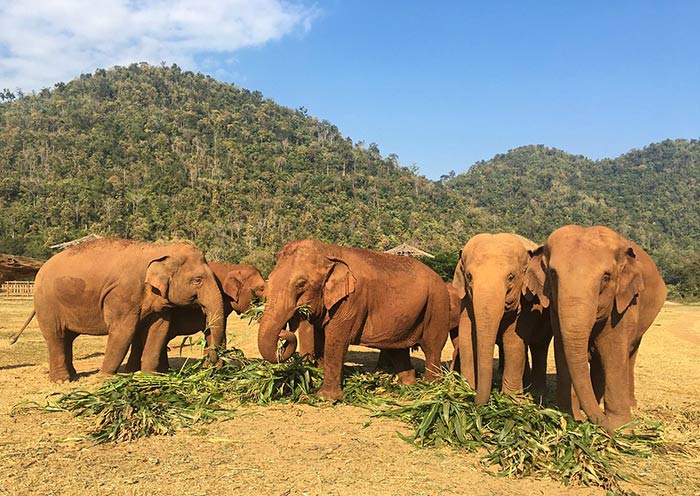
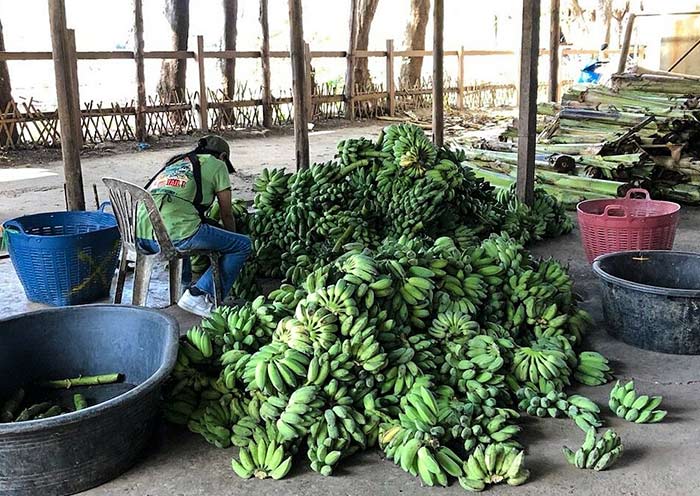
Enjoy a free day in Chiang Mai. Choose your own adventure: explore magnificent temples, visit local markets, or simply relax and soak up the city's atmosphere.
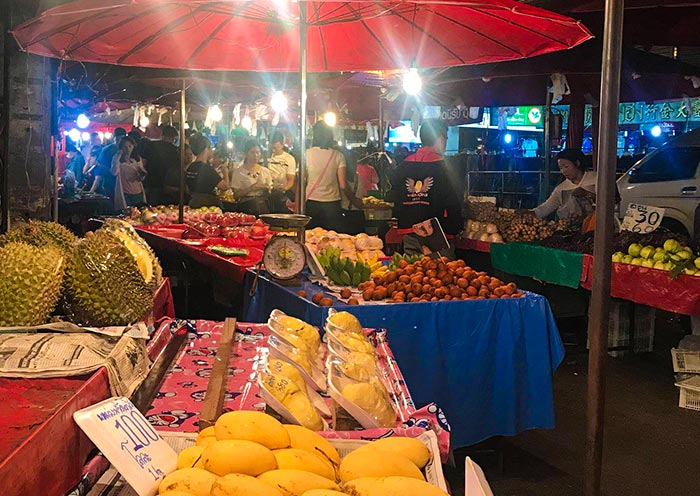
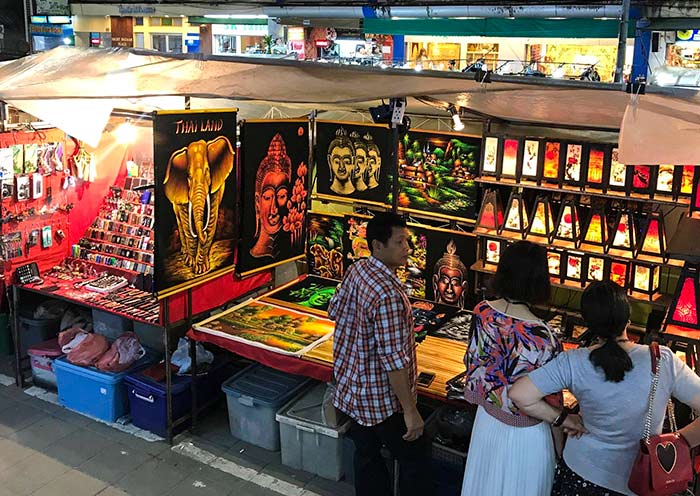
On this day, you are free on your own until the tour guide escorts you to the airport for the flight to Siem Reap, Cambodia.
Welcome to Siem Reap, your gateway for the Temples of Angkor. When you arrive at Siem Reap–Angkor International Airport (SAI), your tour guide and driver will meet you at the exit and then escort you to the hotel in downtown Siem Reap.
Siem Reap is a city in northwestern Cambodia, best known as the gateway to the Temples of Angkor, including the iconic Angkor Wat, which is just 6 kilometers away. The city has transformed into a major tourist hub, with a diverse range of accommodations, and bustling nightlife with numerous restaurants, bars, and night markets.
On this day, you will have time to explore freely on your own.
Optional Activities:
In the evening, you will enjoy a sumptuous welcome dinner buffet. While dining, you'll be treated to a captivating Khmer traditional dance performance, featuring elegant movements and vibrant costumes set to melodious traditional music.
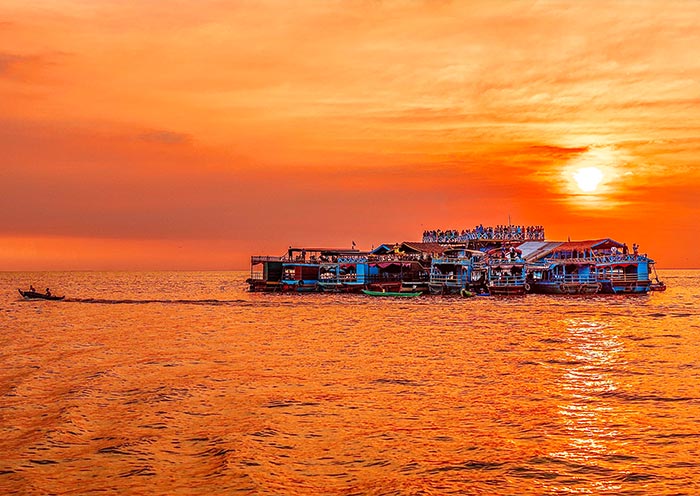
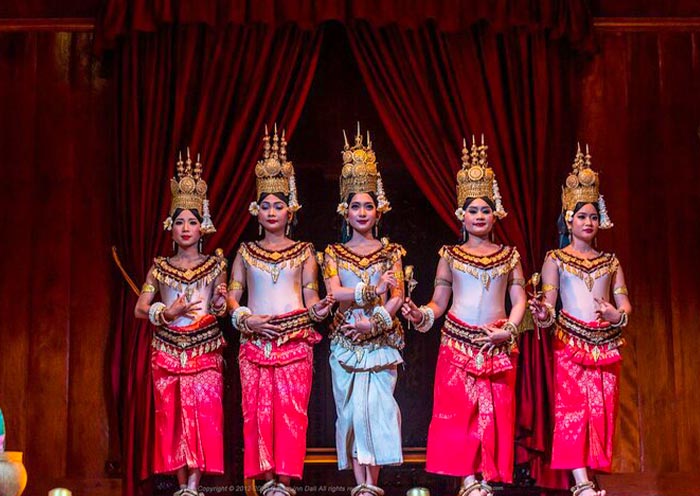
Designated as a UNESCO World Heritage site, Angkor Archaeological Park is a vast and impressive complex. It spans an area of roughly 400 square kilometers and contains the magnificent remains of the various capitals of the Khmer Empire, which flourished from the 9th to the 15th centuries. The park encompasses Angkor Wat, Angkor Thom, Bayon Temple, Banteay Srei, and many other surrounding ruins and relics. Over the next three days, we will take you to explore the Temples of Angkor for a comprehensive experience.
On your first day exploring Angkor Archaeological Park, follow the Small Circuit, a route that takes you to some of the most iconic temples and structures within the park.
Scenic Spots You will Pass:
Sunrise → Angkor Thom → Ta Prohm → Angkor Wat → Get back to your Hotel
Start your day early with a sunrise viewing at Angkor Wat. Arrive at Angkor Wat in time to find a good spot to watch the sunrise. Tips: The sun rises between 5:30 AM and 6:30 AM, depending on the time of year. The silhouette of Angkor Wat’s iconic spires stands sharply against the lightening backdrop, creating a stunning contrast that slowly fills with color. The temple's vast moat reflects this magical scene, doubling the beauty in a perfect mirror image that enhances the surreal atmosphere. After the sunrise, head back to your hotel for breakfast and a short rest.
After breakfast, head to Angkor Thom, the last and most enduring capital city of the Khmer empire. It was established in the late 12th century by King Jayavarman VII in the late twelfth century. Angkor Thom means "Great City" in Khmer. Set over 10 square kilometers, the aptly named last great capital of the Khmer empire took monumental to a whole new level.
Enter through the South Gate and proceed to the Bayon Temple at the city's center. This temple is known for its numerous smiling faces carved into its towers. Each of its 54 Gothic towers is decorated with 216 gargantuan smiling faces of Avalokiteshvara. The temple also features 1.2km of extraordinary bas-reliefs, incorporating more than 11,000 figures. Take your time to marvel at these detailed bas-reliefs, which portray historical events and scenes from daily life in the empire. A short walk northwest from the Bayon will bring you to the Baphuon Temple. This temple, which predates Angkor Thom, was originally a Hindu temple dedicated to Shiva.
Next, visit the Terrace of the Elephants. King Jayavarman VII used this terrace as a viewing platform to observe his victorious returning army. You'll find it adorned with carvings of elephants and other animals, providing excellent photo opportunities. Continue to the nearby Terrace of the Leper King. This 7-meter high laterite platform features multiple tiers of meticulously carved walls depicting nagas (serpents), demons, and various mythical beings. Conclude your visit to Angkor Thom by exiting through the Victory Gate on the east side of the city.
Later, proceed to Ta Prohm (Jungle Temple). Its appeal lies in the fact that, unlike the other monuments of Angkor, it has been swallowed by the jungle, and looks very much the way most of the monuments of Angkor appeared when European explorers first stumbled upon them. It was also featured in the movies "Tomb Raider" and “Raiders of the Lost Ark”, which adds to its popularity. After exploring Ta Prohm, enjoy a relaxing lunch at one of the local restaurants nearby.
In the afternoon, return to Angkor Wat for a more detailed tour of this iconic temple. Uniquely designed with a westward orientation, Angkor Wat is best viewed in the afternoon light. Angkor Wat, the largest monument of the Angkor group and the best preserved, is an architectural masterpiece. Its perfection in composition, balance, proportions, relief, and sculpture make it one of the finest monuments in the world.
Angkor Wat is surrounded by a vast moat, 190 meters wide, forming a rectangle of 1.5 by 1.3 kilometers, which symbolizes the mythical oceans surrounding Mount Meru, the center of the universe in Hindu cosmology. Visitors can enter through the west-facing main gate, which leads directly into a long causeway lined with naga balustrades. Spend time in the galleries which feature extensive bas-reliefs depicting epic stories such as the Battle of Kurukshetra from the Mahabharata, the Judgment by Yama, the Hindu god of death, and scenes of heavenly nymphs (Apsaras) and everyday life in the Khmer Empire. At the heart of the temple complex is the central sanctuary surrounded by four smaller towers, forming a quincunx. The central sanctuary, rising majestically above the forested landscape, symbolizes the mythical Mount Meru and offers a unique perspective on the temple’s layout and the geometric precision with which it was built. Climb up to the central tower, a privilege that offers not only a closer view of the intricate lintel carvings and sculpted friezes but also panoramic views of the entire complex and its surroundings.
After the tour, drive back to your hotel. Stay overnight in Siem Reap

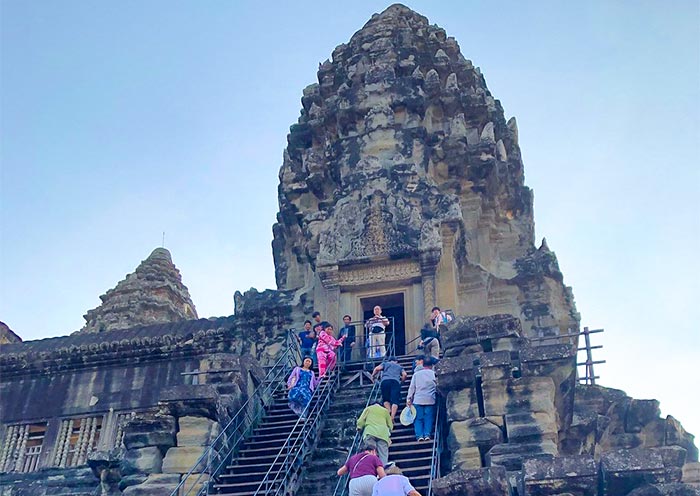
On your third day exploring Angkor Archaeological Park, take a journey beyond the main temple complexes to discover the enchanting and less frequented outlying temples. Banteay Srei, renowned for its intricate carvings and unique pink sandstone construction, and Beng Mealea, a temple shrouded in mystery and overtaken by the jungle, offering a more adventurous experience.
After breakfast, head northeast from Siem Reap to Banteay Srei, which is about 35 kilometers away, approximately an hour's drive.
Your first stop is Banteay Srei, often celebrated as the “Jewel of Khmer Art”. This 10th-century temple is dedicated to the Hindu god Shiva. Banteay Srei stands apart for its small size and the exquisite quality of its ornate carvings, which are the finest found in Cambodia. The stone's pink hue and the elaborate decorative wall carvings of deities and mythical creatures make it a photographer's paradise.
After exploring Banteay Srei, make your way to Beng Mealea, situated about 50 kilometers further, approximately an hour's drive. The drive itself offers a scenic view of the Cambodian countryside. Have lunch at a local restaurant nearby.
Explore Beng Mealea, a temple that offers a completely different experience from the more restored sites around Angkor. Much of Beng Mealea has been reclaimed by the jungle, with trees and vines breaking through the stone blocks. The temple's untouched appearance makes it feel like you're discovering it for the first time. As you walk through its corridors and climb over rubble, you'll discover hidden carvings and collapsed galleries. The nature-infused ruins will leave you marveling, reminiscent of an Indiana Jones adventure.
After exploration, head back to Siem Reap (about 1.5 hours’ drive). Stay overnight in Siem Reap.
Tips for Angkor:
- The Cambodian climate can be very hot, especially around midday. Starting early will help you avoid the hottest part of the day and the largest crowds.
- Shoulders and knees should be covered when visiting the temples as a sign of respect. Lightweight, breathable clothing that covers these areas is ideal.
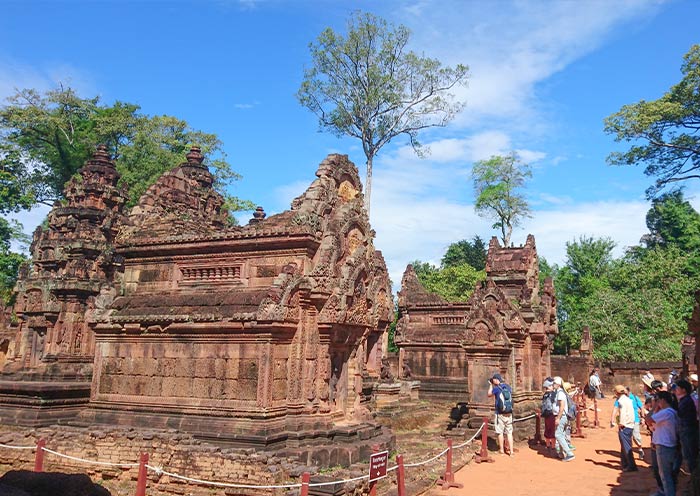
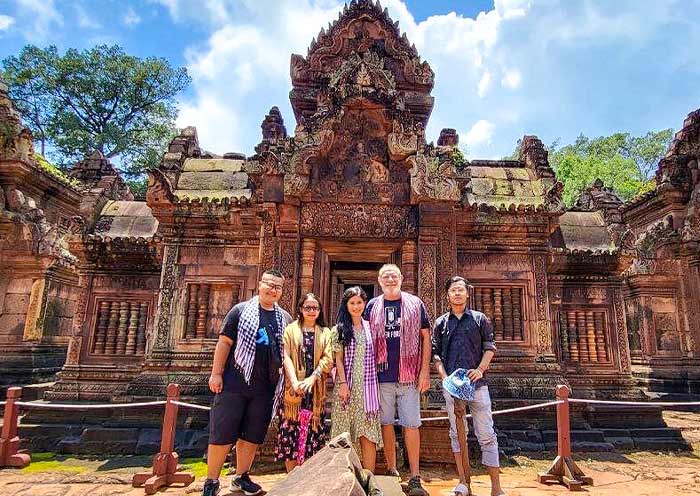
Welcome to Luang Prabang, a historic city that once served as the capital of the Kingdom of Laos until 1975. Nestled between the Mekong River and Nam Khan River, Luang Prabang offers a picturesque setting and a delightful mix of experiences for cultural immersion, outdoor adventure, or simply a relaxing escape. Exploring the UNESCO-protected Luang Prabang Old Town, which showcases a remarkable fusion of traditional Lao architecture and structures built by the European colonial authorities in the 19th and 20th centuries. Immerse yourself in the well-preserved townscape of Luang Prabang and discover the hidden gems that await exploration. Enjoy your overnight stay in Luang Prabang and have a good rest.
Free time Ideas:
- Mount Phousi Sunset: Ascend Mount Phousi for a breathtaking sunset experience. In addition to witnessing the sunset, Mount Phousi is a popular spot known for its panoramic views of Luang Prabang City, the Mekong River, and the Nam Khan River.
- Luang Prabang Night Market: Explore the vibrant stalls, indulge in street food, and uncover the secrets of Lao cuisine. Immerse yourself in the dazzling array of handicrafts, textiles, and souvenirs that the market has to offer.

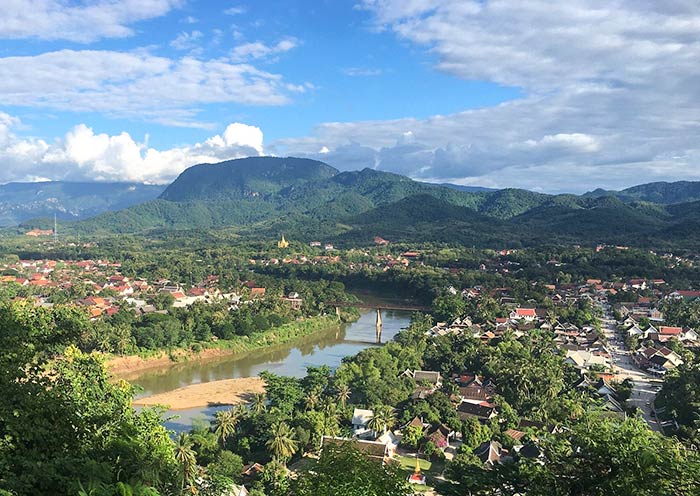
Luang Prabang is renowned for its abundance of Buddhist temples and monasteries. Today, you will enjoy alms-giving ceremony before Temple Hop Tour (Citywalk) at Luang Prabang Old Town (World Heritage Site), visiting Royal Palace Museum, Wat Mai, Wat Aham, Wat Xiengthong, and more.
This morning, you will rise early for an alms-giving ceremony. The daily alms-giving ceremony in Luang Prabang provides a fascinating insight into Laotian Buddhism. This serene and peaceful ceremony takes place at dawn, usually around 5 am to 6:15 am, coinciding with sunrise. By offering food to the monks, believers aim to accumulate merit, which is believed to bring them good karma and improve their future lives. Observing the procession of saffron-clad monks silently collecting alms offers a glimpse into the spiritual life of Laos, showcasing a centuries-old tradition that remains an integral part of Laotian culture. During the ceremony, you may encounter locals dressed in traditional clothing, and you'll witness the town coming alive as the sun rises.
Warm Tips:
1.Before the ceremony, you can purchase offerings, usually sticky rice, from vendors and participate by offering food to the monks.
2.It is important to dress modestly and follow the lead of the locals when offering alms. Show respect throughout the ceremony.
Then, venture to the nearby Morning Market in Luang Prabang (open from 6:00 AM to 9:00 AM) to experience breakfast like the locals do. The market is a haven for trying delicious and unique Lao dishes. Indulge in pre-cooked snacks such as sticky rice, grilled meats, and noodle soups, allowing yourself to savor the flavors of the region.
Then, you will visit the Royal Palace Museum (8-11:30am,1:30-4pm) first. The Royal Palace Museum (National Museum) was once the residence of Laotian kings, offering you a unique opportunity to witness how the Laotian royalty lived. The palace showcases a captivating blend of French colonial and traditional Laotian architecture, reflecting the cultural influences of that era. The museum's exhibits include a wide array of religious objects, royal possessions, weapons, and everyday items, providing a fascinating glimpse into Laotian culture and history. Make sure not to miss the mirrored Throne Hall, where you can marvel at the former royal thrones and catch a glimpse of the crown jewels. Additionally, you can visit Haw Pha Bang, a nearby temple that houses the Prabang Buddha, which is a highly revered national treasure of Laos. Luang Prabang's name derives from the Prabang Buddha statue, meaning "Royal Buddha Image" in Laos.
After that, pay a visit to Wat Mai near the National Museum and across from Mount Phousi. Built in the late 18th century, Wat Mai is a survivor. It's one of the few temples to escape destruction throughout Lao history. This makes it a sacred place for Laotians and a significant landmark in Luang Prabang. The most striking feature is the sim, or ordination hall. This wooden structure boasts a five-tiered roof with sweeping curves that extend almost to the ground. The roof is adorned with golden naga serpents, mythical creatures significant in Lao culture. Inside the sim, you can find a large Phra Bang Buddha statue, believed to date back to the 11th century. This statue is highly revered in Laos.
In the afternoon, hop to Wat Aham. While a smaller temple compared to others in Luang Prabang, Wat Aham holds significance for both animists and Buddhists. The two large banyan trees on the grounds are believed to be residences of the guardian spirits once worshipped at the original shrine. You can step inside the sim (chapel) of Wat Aham to discover vibrant murals adorning the walls. These murals depict Buddhist teachings and Jataka tales, offering a visual representation of Buddhist beliefs. Wat Aham also showcases beautiful Laotian architecture. You can look for details like the stylized stucco tigers guarding the entrance, the statues of temple guardians at the corners, and the two ancient stupas (dome-shaped structures) on the grounds. Don't forget to explore Wat Makmo (That Makmo, Watermelon Stupa) and Wat Wisunarat (Wat Visoun) located around Wat Aham.
At last, head to Wat Xieng Thong. Wat Xieng Thong is a must-visit Buddhist temple in Luang Prabang. It is known for its Laotian design, featuring a sweeping two-tiered roof, intricate carvings, and colorful mosaics. One of the most captivating sights within Wat Xieng Thong is the "Tree of Life" mural displayed on the rear wall of the main chapel. This intricate artwork depicts Buddhist cosmology and the cycle of rebirth. Formerly the royal temple, Wat Xieng Thong was built in the 16th century by King Setthathirath and served as the coronation site for Lao kings. The temple houses several national treasures, including a beautiful Phrabang (a sacred Buddha statue) and the iconic "Sim" (chapel), renowned for its ornately decorated doors. Don't forget to explore the Red Chapel, a smaller structure within the temple complex, which houses a rare reclining black Buddha statue.
Free time Idea:
Take a boat cruise on the Mekong River for sunset and enjoy a scenic perspective from the water. Following the cruise, savor a delightful dinner near the river before returning to your hotel.


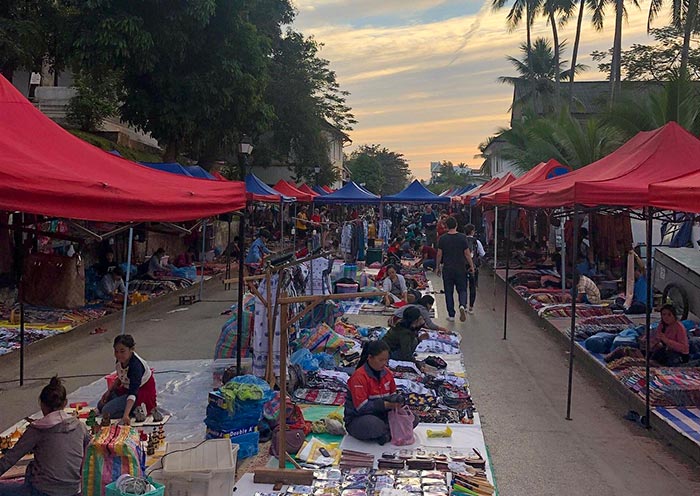

Today is a great day to enjoy an outdoor adventure with a boat trip to the Pak Ou Caves and a unique tour to the Kuang Si Waterfalls (hike & swim), offering a wonderful way to experience the cultural significance and natural beauty of Laos.
During the boat trip to the Pak Ou Caves, you'll sail up the Mekong River, the largest river in Laos. This scenic journey provides breathtaking views of the surrounding mountains, rice paddies, and charming riverside villages. Keep an eye out for local fishermen in their boats. After a relaxing boat ride, you'll reach the base of the limestone cliffs where the Pak Ou Caves are situated. These caves, known as Tham Ting (lower cave) and Tham Theung (upper cave), house hundreds of Buddha images that date back centuries.
Then, head to Kuang Si Waterfalls. Kuang Si Waterfalls (Kuang Xi Falls, Little Jiuzhaigou) is a must-visit place in Laos to enjoy an outdoor adventure (family-friendly) due to its multi-tiered cascade and swimmable natural pools. The turquoise-blue water flows over limestone rocks, creating a series of turquoise pools and waterfalls. The visual beauty of the cascading water and the surrounding lush jungle is a sight to behold. Several of the pristine pools at the base of the waterfalls are shallow enough for swimming (Bring your Swimsuit). Take a refreshing dip in the cool water on a hot Laotian day. The area surrounding the waterfalls offers opportunities for a nature hike through the lush jungle. Keep an eye out for local birds and other wildlife.
Also, if time permits, you can visit the Tat Kuang Si Bear Rescue Centre (optional) located at the foot of the Kuang Si Waterfalls. At the rescue center, you can learn about Asiatic black bears and the ongoing efforts in bear conservation.
If time permit, you can add one day for the Luang Prabang Excursions:
Day Tour at the Living Land Rice Farm: You'll gain a deeper appreciation for Laotian culture, tradition, and the importance of rice agriculture. It's a memorable and enriching experience that will leave you with a newfound understanding of rural life in Laos.
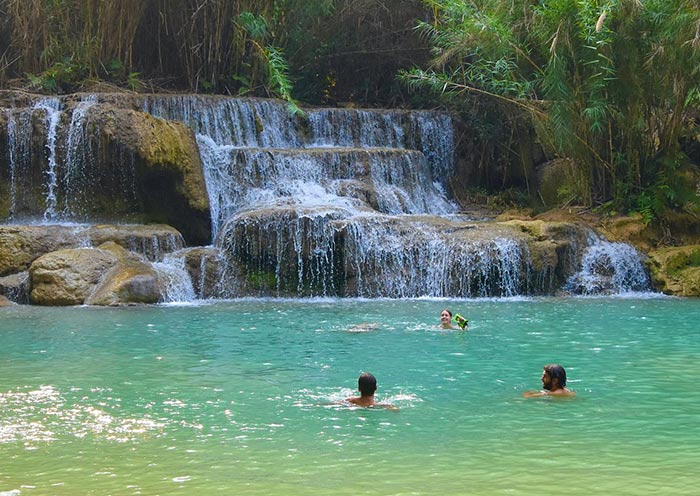

On this day, you are free on your own until the tour guide escorts you to the airport for the flight to Hanoi.
Welcome to Hanoi, the capital city of Vietnam!
Upon arrival at Noi Bai International Airport, you will be met by our local guide and driver. Then, we will take you to your carefully selected hotel in Hanoi. We will assist you with check-in. The rest of today is free for you to explore this old and charming city at your own pace.
Hanoi, located in northern Vietnam, boasts a rich history dating back over 1,000 years. It showcases a blend of Vietnamese, Chinese, and French influences. Renowned for its diverse culinary scene, Hanoi is considered a food lover's paradise to taste Vietnamese cuisine. The city is famous for its street food, where you can savor an array of local specialties.

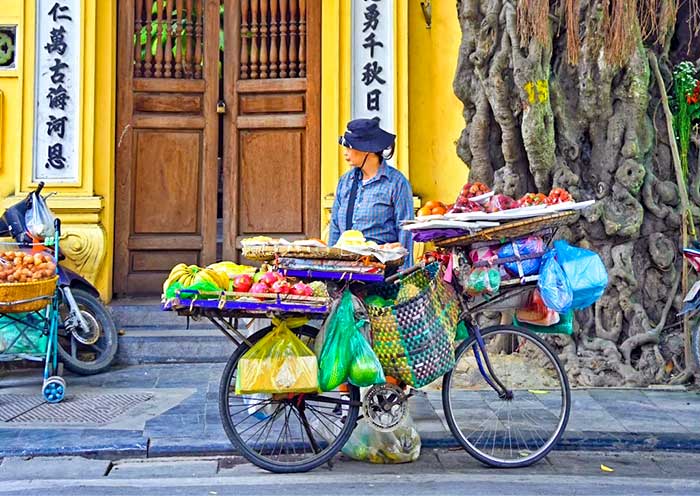
After breakfast, your guide will pick you up at your hotel for a delightful day exploring Hanoi City. This city holds a unique charm despite not being the most modern. Its character lies in the captivating blend of Vietnamese, Chinese, and French influences, all woven together with the city's authentic and bustling local life within its old alleyways. Indulge in the delicious local street food for a taste of true Vietnamese flavors.
Our first stop is a tranquil escape to Tran Quoc Pagoda, nestled amidst the picturesque West Lake. It is the oldest Buddhist temple in Hanoi, with a history dating back over 1500 years. As you approach, you'll be greeted by the sight of the iconic 11-story lotus tower, a symbol of the pagoda. Step inside the main hall and explore its beauty, where intricate carvings and frescoes adorn the walls. Be sure to admire the serene lotus pond, adding to the pagoda's peaceful atmosphere.
Later, head to the Ho Chi Minh Mausoleum, situated in Ba Dinh Square. The mausoleum serves as the final resting place of Ho Chi Minh (Uncle Ho), the revered leader of Vietnamese independence and the founding father of modern Vietnam. Dress respectfully and visit the mausoleum to pay homage to this iconic figure and learn about his immense role in shaping the nation. If you're lucky, you might witness the solemn and precise military honor guard ceremony. (Note: 1. The Mausoleum closes from Sep. 4 to Nov. 4 every year. 2. The surrounding sites include the Presidential Palace, Ho Chi Minh's Stilt House, and the Ho Chi Minh Museum.)
Afterward, enjoy a short walk to visit the One Pillar Pagoda. Prepare to be amazed by its distinctive shape: the main building sits atop a single stone pillar, resembling a lotus flower blossoming from a pond. Legend has it that Emperor Ly Thai Tong dreamt of receiving a son from the Buddhist goddess of mercy, Quan Am Bo Tat, on a lotus flower. The pagoda's construction served as a way to express his gratitude. Later, visit the Temple of Literature, Vietnam's first university and a site dedicated to Confucianism.
This afternoon, delve into Vietnam's fascinating history at the Vietnam National Museum of History. Here, you'll gain a comprehensive understanding of Vietnam's past, from prehistoric times to the 20th century, through a captivating display of artifacts. Witness ancient bronze drums, intricate ceramics, and powerful imperial regalia, each piece whispering stories of Vietnam's remarkable evolution.
Later, head to Hoan Kiem Lake, also known as Lake of the Restored Sword, a shimmering jewel in the heart of Hanoi. Take a leisurely stroll along the lake's perimeter, enjoying a view of the iconic Turtle Tower. Legend tells the tale of Emperor Le Loi returning a magical sword to a giant turtle residing in the lake, thus giving rise to the name "Lake of the Returned Sword." Afterwards, visit Ngoc Son Temple, dedicated to various Vietnamese historical figures and the revered Confucian scholar Van Xuong.
Afterward, immerse yourself in the local life of Vietnam with a unique and fun cyclo tour! For about an hour, you'll travel at a slow and leisurely pace through the iconic Old Quarter of Hanoi. A cyclo, a traditional three-wheeled bicycle taxi, will be your chariot for exploring the narrow streets. Cruise through the famed 36 Streets (each named after a specific trade) and pass by iconic landmarks like Dong Xuan Market, St. Joseph's Cathedral, and the Hanoi Opera House. This is a fantastic way to experience the Old Quarter's charming and vibrant atmosphere firsthand! Don't miss the chance to savor the delicious variety of Vietnamese street food and local dishes!
Optional Water Puppet Show: Immerse yourself in a unique Vietnamese tradition by catching a water puppet show in the late afternoon or evening! Dating back to the 11th century, these captivating performances use colorful puppets manipulated on a water stage to depict folktales and historical events. A highly-recommended venue for this experience is the Thang Long Water Puppet Theatre.
After the tour, be escorted to your hotel in Hanoi.
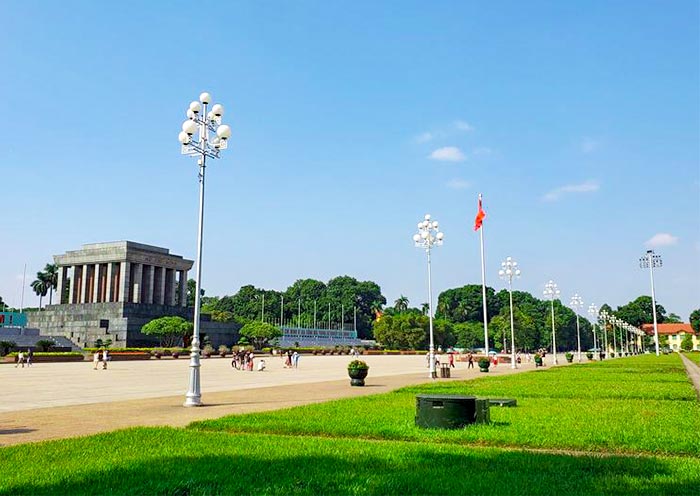

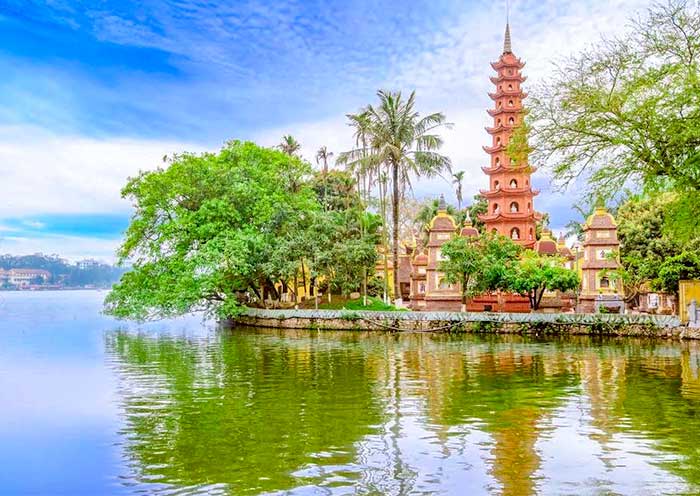
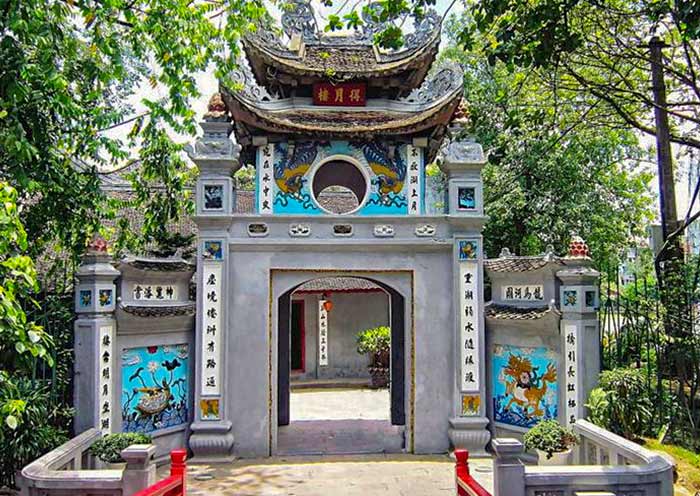
Halong Bay, A UNESCO World Heritage Site, boasts thousands of majestic limestone formations, sculpted by nature over millions of years. Reputed as “Guilin on the Sea”, these emerald islands rise dramatically from crystal-clear turquoise waters, creating a breathtaking seascape. Thanks to its dramatic cliffs, shimmering turquoise waters, and over 1,600 limestone islands and islets, Halong Bay is one of the most popular destinations in northern Vietnam. A cruise offers the best way to experience its unparalleled beauty.
Morning:
This morning, between 8:00 AM and 8:30 AM, the cruise company's shuttle bus will pick you up in Hanoi's Old Quarter area. Hop aboard and prepare to be whisked away on a scenic 2.5-hour drive (147 km) to stunning Halong Bay!
Upon arrival, you'll be warmly welcomed aboard with a refreshing drink. Following a quick safety briefing from the cruise manager, you can relax and savor a delicious lunch onboard.
Afternoon:
This afternoon, you’ll explore Halong Bay's dramatic karst landscape with your cruise! Different cruise companies offer various itineraries, but you might visit some of these fascinating spots and try water activities like kayaking, swimming, etc. Watch the sunset paint the karst mountains with colors.
- Sung Sot Cave (Surprise Cave):Discover a magnificent cave adorned with stalactites and stalagmites.
- Titop Island:Hike to the peak for breathtaking panoramic views of the bay.
- Cua Van Fishing Village:Witness the traditional way of life of local fishermen in a floating village.
- Tung Sau Pearl Farm:Learn about pearl cultivation and see these beautiful gems firsthand.
- Trinh Nu Cave (Virgin Cave):Discover a secluded cave with a unique rock formation.
Evening
This evening, indulge in a hearty dinner prepared by our talented chefs in the elegant dining room. After dinner, unwind with a variety of leisure options: join in on board games, try your hand at squid fishing, catch a night movie, or head to the bars & karaoke. Overnight onboard.

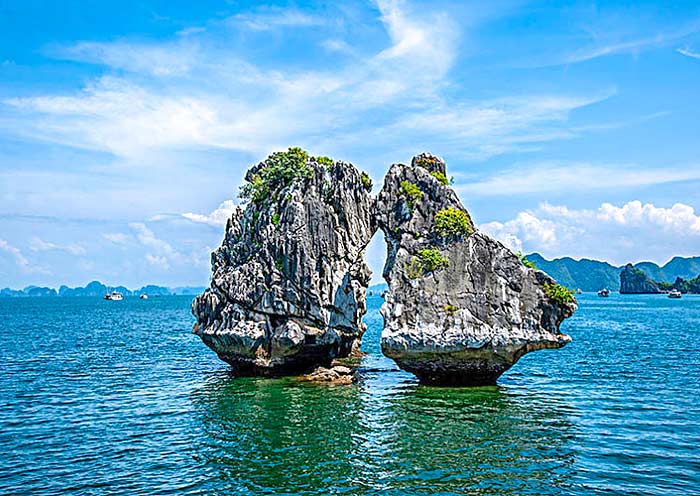
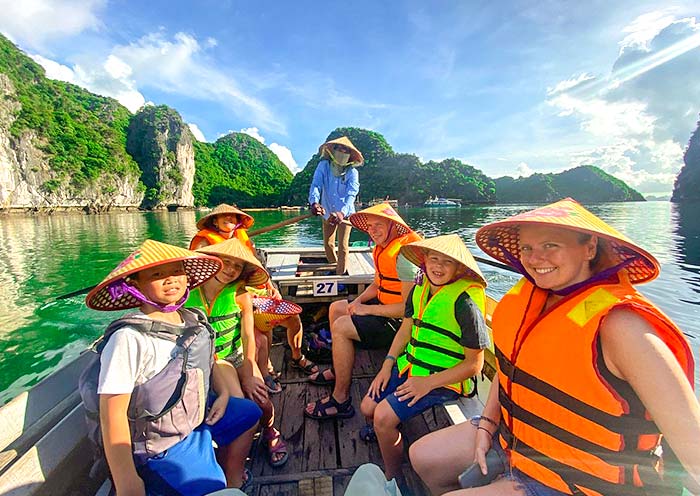

Early risers can embrace the sunrise with a Tai Chi class on the sundeck, invigorating your body and mind. Enjoy a delicious breakfast to onboard.
After breakfast, continue your exploration of Halong Bay! You can choose to participate in exciting water activities like kayaking or follow the cruise itinerary to admire the majestic limestone formations.
Later this morning, return to the cruise for a smooth check-out process at the reception. As you cruise back to the pier, savor a delightful lunch at 10:00 AM. Disembarkation will take place between 11:00 AM and 11:30 AM.
Following disembarkation, you'll be transferred back to Hanoi. Meet your driver and head to the airport for your flight to Da Nang (about 1h 20m).
Upon arrival in Da Nang, you'll be met by your tour guide and whisked away for a scenic 1-hour drive to Hoi An. Welcome to Hoi An, a UNESCO World Heritage Site famed for its enchanting Hoi An Ancient Town! This charming town boasts a unique blend of architectural styles, reflecting Vietnamese, Chinese, Japanese, and European influences. Your guide will then take you to your hotel in Hoi An for check-in. The rest of the day is yours to explore at your own pace!


After breakfast, your tour guide will pick you up at your hotel for a half-day excursion to Cam Thanh village, a charming fishing village nestled amidst the Cam Thanh Water Coconut Forest.
The basket boat's history can be traced back over 2,000 years to the Cham people who settled in this area. Originally designed for fishing in shallow waters, these unique Vietnamese watercraft are still used today.
Upon arrival, prepare to take an exciting 45-minute to 1-hour adventure on a traditional basket boat. Crafted from bamboo and woven palm leaves, these boats will take you on a journey through the heart of the verdant coconut palm forest. As you glide through the serene waterways, surrounded by lush coconut groves and vibrant rice paddies, soak in the peaceful atmosphere. Witness the unique ecosystem teeming with diverse flora and fauna. Learn about the local community's commendable efforts in preserving this remarkable environment.
Other activities and experiences include:
- Dance with the locals in the basket boat;
- Try your hand at casting traditional nets and basket traps;
- Catch crabs or snails by the riverbank.
After your exciting excursion to Cam Thanh village, you'll return to Hoi An where you can savor a delicious lunch of authentic Vietnamese cuisine. This afternoon, enjoy a captivating exploration of Hoi An Ancient Town with your knowledgeable guide.
Hoi An Ancient Town, a UNESCO World Heritage Site, is an exceptionally well-preserved example of a Southeast Asian trading port dating from the 15th to the 19th centuries. The complex boasts 1,107 timber-frame buildings. It represents a fusion of indigenous and foreign cultures (principally Chinese and Japanese, with later European influences) that combined to produce this unique, well-preserved town. Walking through Hoi An is like stepping back in time. Our guide will lead you to some of the town's most significant landmarks, including the iconic Japanese Covered Bridge, the ornate Fujian Assembly Hall, and the historic Tan Ky House (Old House of Tan Ky). After, explore the bustling Hoi An market and delve into some of the delicious local offerings, like Cao Lau (Pork Rice Noodles), Com Ga (Chicken Rice), Banh Mi (Vietnamese Baguette), White Rose Dumplings (Banh Bao Vac), and Mi Quang (Turmeric Noodle Soup).
Optional Night Time Ideas in Hoi An Ancient Town:
- As dusk falls, the town comes alive with soft glow of lanterns. Take a leisurely stroll through the narrow alleys and admire the vibrant colors and intricate designs.
- Enjoy a relaxing boat ride on the Thu Bon River as you take in the illuminated riverside and the Japanese Covered Bridge.
- Explore the bustling Hoi An Night Market, where you can find a plethora of local specialties and souvenirs.
- After the tour, you’ll be transferred back to the hotel, and then you can have the rest of the day to yourself.
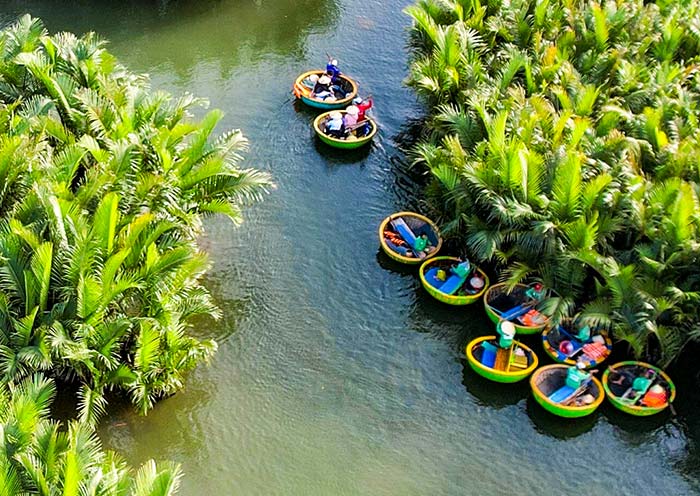



Today, enjoy a journey of discovery through Hoi An's captivating streets. Explore its colorful shops, historical landmarks, and charming atmosphere at your own pace.


After breakfast, your guide and driver will pick you up at your hotel in Hoi An and whisk you away to Hue City. The 121km journey takes about 2.5-3 hours. Along the way, you'll drive through the Hai Van Pass Tunnel, which held the title of Southeast Asia's longest tunnel upon completion. On the Da Nang side, prepare to be dazzled by lush coastal mountains, the sparkling East Sea, and the vibrant cityscape of Da Nang. In contrast, the Hue side offers a serene landscape of rolling hills, rural countryside, and glimpses of the Perfume River.
For those who crave the scenic beauty of Hai Van Pass, a viewpoint awaits near the tunnel entrance on the Da Nang side. This vantage point allows you to admire breathtaking vistas of the mountains, the coast, and the winding road snaking below. Descending from the pass, you might catch a glimpse of Lang Co Beach, a beautiful stretch of pristine sand fringed with coconut palms.
Upon arrival, you'll be greeted by the Mausoleum of Emperor Khai Dinh, perched regally on a slope of Chau Chu Mountain. Built as the final resting place for Emperor Khai Dinh, the twelfth ruler of the Nguyen Dynasty (1916-1925), the mausoleum is renowned for its unique architectural blend. Here, traditional Vietnamese elements are masterfully fused with French-influenced details, creating a visually striking landmark distinct from other imperial tombs in the area. As you enter, prepare to be dazzled by the elaborate decorations and intricate designs. The walls are adorned with colorful mosaics meticulously crafted from ceramic fragments, offering a visually captivating experience. Look up to admire the ceilings, adorned with intricate paintings and carvings that showcase the fine craftsmanship of the artisans who built this remarkable structure.
After lunch, the main highlight is Hue Imperial City, also known as the Citadel. This former seat of power for the Nguyen Dynasty, Vietnam's last ruling dynasty, flourished as the country's political, administrative, and cultural center for over a century. Exploring the Citadel allows visitors to delve into Vietnam's imperial past and gain insights into its rich history. Modeled after the Forbidden City in Beijing, the Hue Imperial City is about half the size of its counterpart.
Enter through Ngo Mon Gate, a symbolic entrance adorned with vibrant colors. It is an imposing structure with two levels and a central passageway reserved for the emperor. Begin your exploration by following the counter-clockwise direction. Following the route, proceed to Thai Hoa Palace, the Hall of Supreme Harmony. This impressive structure served as the throne room for important ceremonies and royal receptions. Pass through Halls of the Mandarins, Thai Binh Lau (Emperor’s Reading Room), Duyen Thi Duong (Royal Theater), Co Hua Gardens, Forbidden Purple City (private residence for the Nguyen emperors), Dien Tho Residence (place for the concubines), etc.
After exploring the Imperial City, head to Thien Mu Pagoda, a captivating landmark gracing the banks of the Perfume River in Hue. As one of the oldest and most revered pagodas in the city, it boasts a unique seven-story octagonal tower, the tallest of its kind in Vietnam. Each level is adorned with intricate Buddhist symbols and offers beautiful vistas of the surrounding landscape.
Last, let's go to Dong Ba Market, a bustling hub in Hue's heart. As one of the oldest markets in the city, it offers a wide variety of goods, from traditional clothing and food to souvenirs and jewelry. Browse the daily fresh ingredients used in Central Vietnamese cooking, a plethora of delectable local specialties, and exquisite handicrafts, all under one roof.
Optional Experience with Sunset Cruise along Perfume River:
Glide down the Perfume River on a traditional wooden dragon boat cruise and discover the magic of Hue in the late afternoon. Relax and soak in the fresh air as you pass by beautiful garden houses, ancient pagodas, and witness a romantic sunset painting the sky over the river.

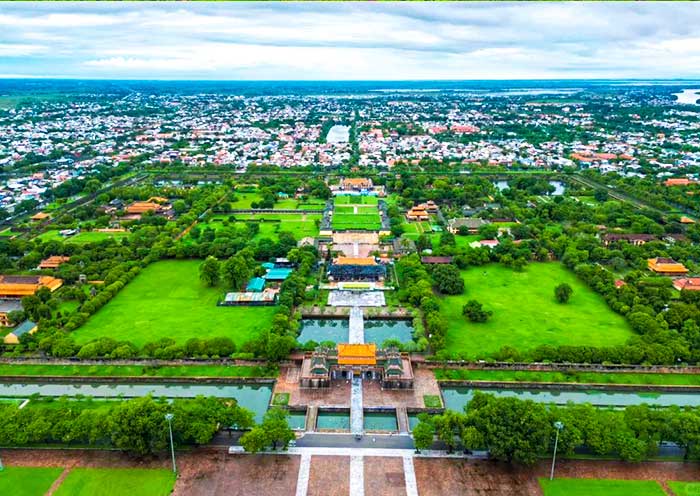


This morning, you will be transferred from Hue to Da Nang for a flight to Ho Chi Minh City (about 1.5 hours).
Welcome to Ho Chi Minh City! Formerly known as Saigon, Ho Chi Minh City is the largest city in Vietnam. Located in southern Vietnam, it's a well-blended mix of historical significance and modern dynamism.
Upon arrival at Tan Son Nhat International Airport in Ho Chi Minh City (approximately 6.5km from downtown), your local guide will meet you and escort you to your hotel. The rest of today is free for you to explore the city on your own.
Free Time Activities in Ho Chi Minh City:
Immerse yourself in Saigon's famed coffee culture at the Coffee Apartment, then be captivated by the vibrant atmosphere of Ben Thanh Market. Explore a world of local crafts, and tantalize your taste buds with the incredible array of Vietnamese street food - a sensory explosion you won't forget!

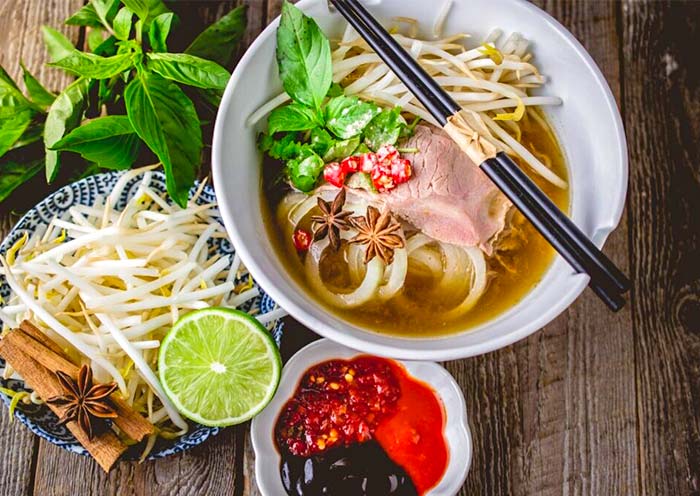
After breakfast, after a comfortable 1.5-hour drive, you will arrive at the Cu Chi Tunnels. Here, you and your family will have the opportunity to explore the intricate tunnel system, which consists of narrow passageways, hidden entrances, and underground chambers. Your guide will share insights into the daily life of the Cu Chi guerrilla fighters and their remarkable ability to survive within the tunnels. Prepare to crawl through sections of the tunnels that were used during the Vietnam War. You will see firsthand the kitchens, living quarters, and other essential spaces built underground. Additionally, you will visit weapon rooms and discover how these resourceful soldiers crafted their tools.
After the tour, return to Ho Chi Minh City for a half-day city tour to explore Ho Chi Minh City's rich history, culture, and vibrant modern life.
Our first stop is the Reunification Palace, also called the Independence Palace, a captivating architectural marvel that once served as the residence of the South Vietnamese President. Here, you can witness the iconic image of North Vietnamese tanks storming the palace gates, a defining moment that marked the end of the Vietnam War in 1975. Next, we head to the War Remnants Museum, a poignant and powerful testament to the realities of the Vietnam War. Prepare to be moved by exhibits showcasing artifacts, photographs, and weaponry that tell stories of war and resilience.
Next on your itinerary is Nha Tho Tan Dinh, also known as the Pink Church. This vibrant landmark stands out with its unique hue, making it instantly recognizable and a popular spot to capture stunning photos. Step back in time as you learn that Nha Tho Tan Dinh was built in the late 19th century, making it one of the oldest churches in Ho Chi Minh City. Admire the fascinating blend of Romanesque and Gothic styles in its architecture, with two grand bell towers flanking the entrance. Snap some cool pictures outside to remember your visit!
Afterwards, head to the Jade Emperor Pagoda, a vibrant temple dedicated to the supreme deity in Taoism, the Jade Emperor. Here, you can marvel at colorful statues, intricate carvings, and exquisite woodwork that adorn the pagoda. Then, be transported back in time at the Central Post Office, a majestic building constructed in the early 20th century. Take a moment to appreciate the impressive facade with its wrought-iron details and colorful mosaic floors. (Optional Experience: To create a lasting memory of Vietnam, send postcards to your loved ones from this historic landmark.)
Stay overnight in Ho Chi Minh City.
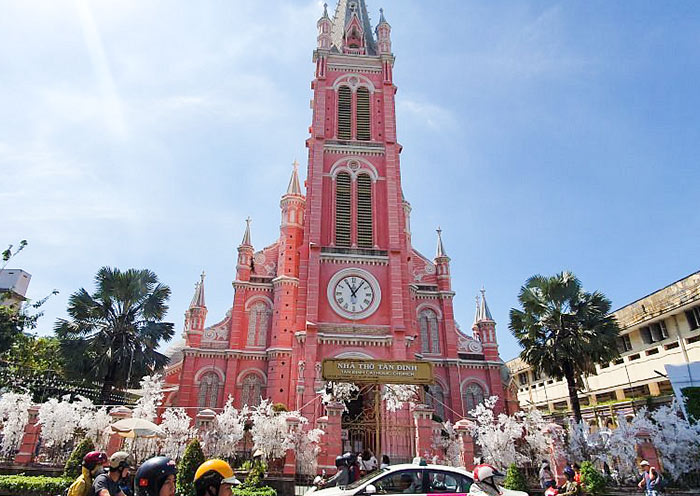
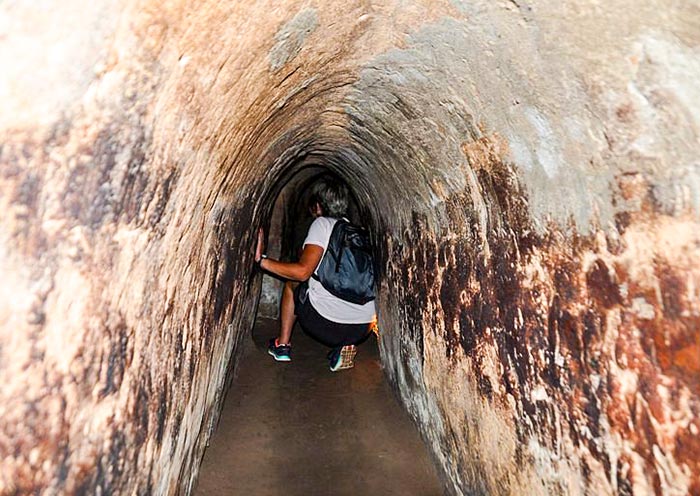


After breakfast, spend a full day exploring the Mekong Delta at a relaxing pace. Mekong Delta, located in southwestern Vietnam, is a vast maze of rivers, canals, islands, and rice paddies formed by the Mekong River as it empties into the sea. Known as the "rice bowl" of Vietnam, the Delta is a major agricultural hub, producing a significant portion of the country's rice and fish.
Start from Ho Chi Minh City, you and your family will pass through green rice fields and small villages to arrive in beautiful rural My Tho. Upon arrival, your first stop is Vinh Trang Pagoda. Built in the mid-19th century, Vinh Trang is renowned for its stunning architecture, showcasing a harmonious fusion of Vietnamese, Chinese, and Khmer influences. You will be amazed by the outstanding architecture, meticulously carved columns with intricate details, and visits to the Statue of Maitreya Buddha, Statue of Amitabha Buddha, Reclining Buddha statue, and 7-story tower.
Later, head to the nearby pier to board a traditional Mekong Delta boat for a scenic cruise along the majestic river. As you explore, lush greenery and bustling river life will captivate you. Glide past the Turtle, Dragon, and Phoenix Islets, eventually arriving at the enchanting Unicorn Islet. And, delve deeper into the Delta's heart with a ride on a traditional sampan boat through narrow waterways lined with coconut palms. This intimate experience allows you to appreciate the unique ecosystem and the local way of life firsthand. You and your family will stop at a bee farm to savor honey tea, taste local fruits, and immerse yourself in traditional music performed by the villagers. Learn about their daily lives and gain a deeper understanding of the region's culture.
After the tour, be transferred to Can Tho (106km, about 1.5-2 hours). Stay overnight in Can Tho.

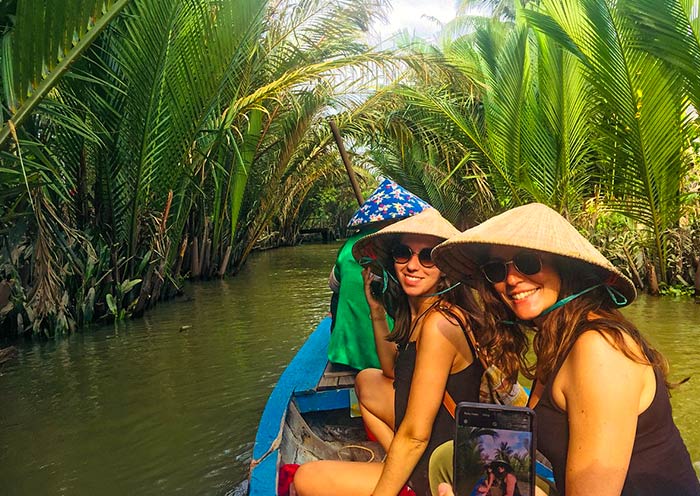
Today, you will go for a captivating journey to Cai Rang Floating Market, the largest wholesale market of its kind in the Mekong Delta. Cai Rang promises a unique and colorful experience, offering a glimpse into a traditional way of life. Don't forget your camera to capture the vibrant scene! To witness the market at its peak, an early start is key. Hundreds of boats laden with fresh produce from nearby farms gather to trade between 4:00 AM and 10:00 AM.
After breakfast, your guide will whisk you away to Ninh Kieu Quay for a scenic boat trip down the river. As you float, absorb the sights of life along the shores: vibrantly painted boats dot the landscape, merchant vessels carry their loads, and stilt houses rise from the water. Upon reaching the market, prepare to be awestruck by the impressive sight - a vast stretch of boats overflowing with goods lining the river. Here, you'll discover the intriguing trading methods employed by the vendors. Be sure to try some of the local food and drinks on offer for a truly immersive experience!
Here are some useful tips for your visit to Cai Rang Floating Market:
- Bring cash:Most vendors will not accept credit cards.
- Dress comfortably:It can get hot and sunny on the river, so wear comfortable clothing and a hat.
- Bring sunscreen and sunglasses:The sun can be strong, so be sure to protect yourself from the rays.
- Haggling is expected:When buying from vendors, be prepared to haggle for the best price.
Next, head to a traditional rice noodle factory in Can Tho. Here, visitors can learn the art of making rice noodles, savor the unique 'rice noodle pizza,' and soak up the charm of Can Tho's rural surroundings.
After your market visit, return to Can Tho to explore the Can Tho Museum. The Can Tho Museum delves into the Mekong Delta's agricultural and river-based way of life, showcasing how Vietnamese, Chinese, and Khmer ethnics have peacefully co-existed in this region.
Following your tour, you'll be transferred back to Ho Chi Minh City.

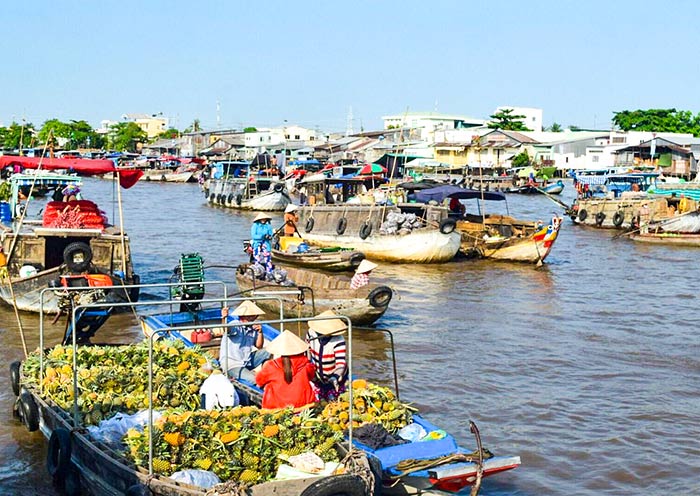
It is time to end your 26-day Asia tour. Today, you'll be escorted to Tan Son Nhat International Airport to catch a flight for your departure.
Trip Extension: If you plan to continue exploring more in Asia, don't hesitate to let us know. We can customize your itinerary and assist with travel arrangements.
Thank you for choosing Asia Odyssey Travel for your Asia tour, we are always here working for you and hope to see you again for your next trip to Asia. Safe journey!

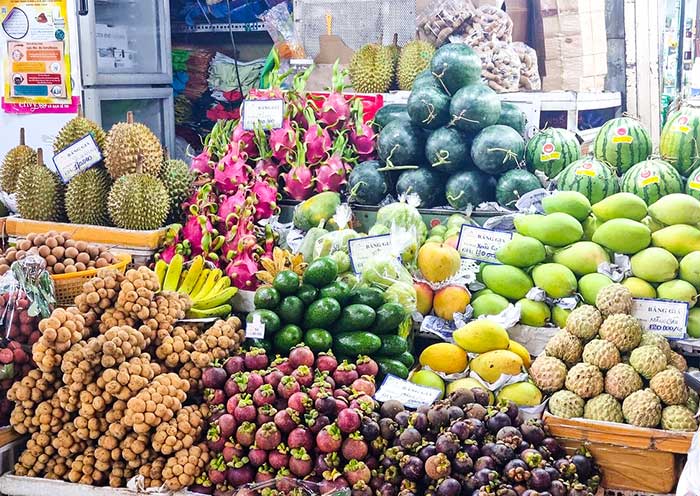
Price: What’s Included & What’s Excluded
What's Included:
What's Excluded:
Important Travel Tips for Visiting Southeast Asia
Visa requirements vary depending on your nationality and the length of your stay. It's important to check the specific requirements for each country you plan to visit well in advance of your trip. You can usually find this information on the embassy or consulate website of the country you're visiting.
Dry season (November to April): This is the peak tourist season for Southeast Asia as a whole, with the most consistent sunshine and comfortable temperatures. Ideal for beach lovers and those who want to avoid the rain. This is also a great time for trekking and other outdoor activities.
Average temperatures during Dry Season in Southeast Asia:
- Vietnam: 77°F - 86°F (25°C - 30°C): It can be slightly cooler in the northern mountains during December and January.
- Thailand: 82°F - 90°F (28°C - 32°C): Eastern and southern Thailand, including popular beach destinations, tend to be a few degrees warmer than the north.
- Laos: 75°F - 88°F (24°C - 31°C): Keep in mind that the mountainous areas of Laos can get chilly at night, especially in December and January.
- Cambodia: 84°F - 93°F (29°C - 34°C): Temperatures can get quite hot, especially from March to May, in Siem Reap (Angkor Wat).
The currency varies from country to country. In Vietnam, the currency is the Vietnamese đồng (VND). In Thailand, it's the Thai baht (THB). In Laos, it's the Lao kip (LAK). And in Cambodia, it's the Cambodian riel (KHR). However, US dollars are widely accepted in most tourist areas.
- Dress modestly: When visiting temples, pagodas, or other religious sites, it's important to dress modestly and respectfully. This means covering your shoulders and knees.
- Removing shoes: In many temples, it is customary to remove your shoes before entering. Look for a pile of shoes at the entrance as a cue to do the same.
- Bargaining: Bargaining is a common practice in Southeast Asia countries’ markets and street stalls. However, it's important to do so respectfully and with a friendly attitude. Remember that the aim is to reach a mutually agreed-upon price, not to aggressively drive the price down.
Looking for more travel guides about Southeast Asia countries? Want to gather additional information to plan your trip? Our team of professional travel experts has written over 100 articles about Vietnam Thailand Cambodia Laos. Please check out our Southeast Asia Travel Guide for inspiration and detailed insights.
Hotel Conditions for Your Southeast Asia Tour
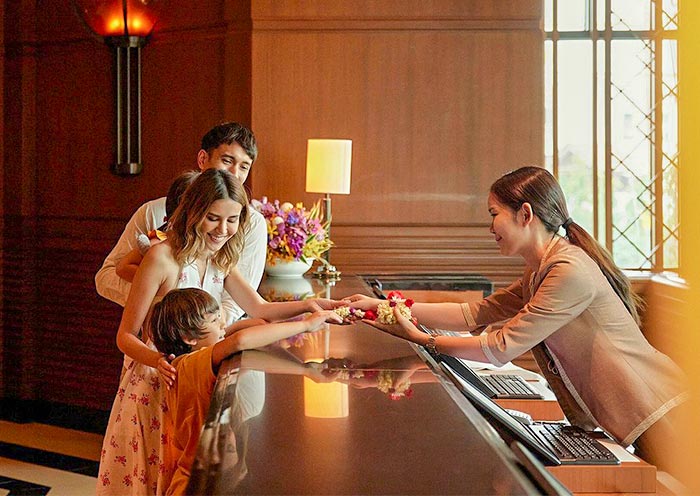

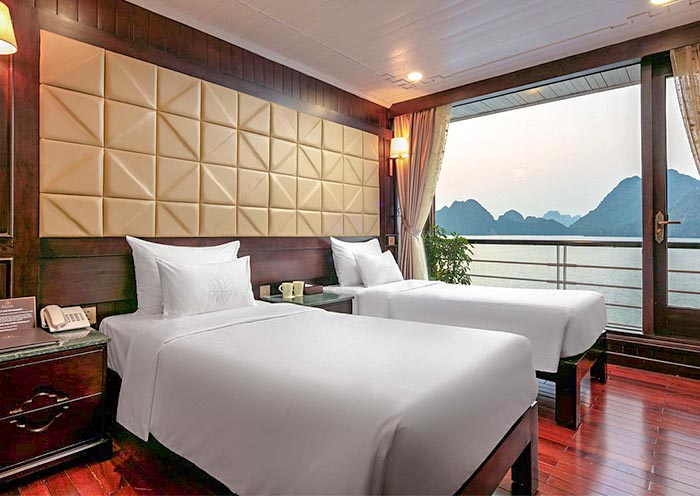
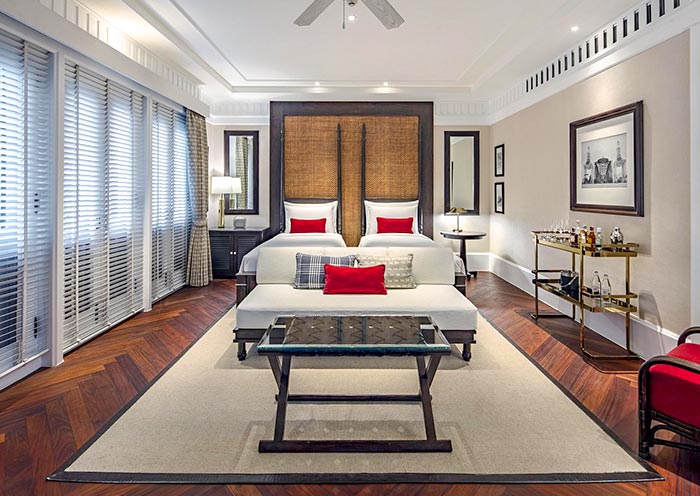
No matter whether you combine 2 or 3 countries, or visit all 4 countries in Southeast Asia, there are many different hotel styles and types to choose from. Travelers typically spend 7-9 nights in Vietnam, 6-9 nights in Thailand, and 2-3 nights each in Cambodia and Laos.
To cater to diverse traveler preferences and budgets, we offer a curated selection of accommodations. Our options include luxurious 5-star hotels, comfortable 4-star options, and economical 3-star establishments. All our selected hotels are conveniently located near city centers or popular tourist spots.
Find your perfect hotel for a great Southeast Asian experience! Our knowledgeable travel experts can provide you with various pricing options based on different hotels. Whether you seek a luxurious stay or have specific preferences, our experts will assist you in choosing the best option that suits your needs.
Photo Gallery for This Itinerary
Latest Southeast Asia Tours Reviews from Our Customers

Jan Woolley
USA
Date of Experience: Apr 26, 2024
Tour Customized by: Tony
You May be Interested in This Tour: Customized Tour

Emma
Singapore
Destination(s): Other
Date of Experience: Sep 14, 2023
Tour Customized by: Owen
You May be Interested in This Tour: Customized Tour

Arizona
Australia
Destination(s): Other
Date of Experience: Sep 04, 2023
Tour Customized by: Teresa
You May be Interested in This Tour: Customized Tour
Price: request
(Based on a private tour for two people. Price varies depending on program, travel date, number of people.)
Free Enquiry! You don’t need to pay for the reservation.
- United States (+1)
- Australia (+61)
- Singapore (+65)
- Malaysia (+60)
- Philippines (+63)
- Canada (+1)
- Italy (+39)
- Indonesia (+62)
- United Kingdom (+44)
- Spain (+34)
- Mexico (+52)
- Hong Kong (+852)
- Thailand (+66)
- United Arab Emirates (+971)
- New Zealand (+64)
- South Africa (+27)
- Germany (+49)
- Brazil (+55)
- India (+91)
- France (+33)
- Vietnam (+84)
- The Netherlands (+31)
- Saudi Arabia (+966)
- Ireland (+353)
- Argentina (+54)
- Switzerland (+41)
- Romania (+40)
- Pakistan (+92)
- Japan (+81)
- Portugal (+351)
- Bangladesh (+880)
- South Korea (+82)
- Puerto Rico (+1)
- Türkiye (+90)
- China (+86)
- Belgium (+32)
- Qatar (+974)
- Greece (+30)
- Taiwan (+886)
- Austria (+43)
- Poland (+48)
- Israel (+972)
- Chile (+56)
- Sri Lanka (+94)
- Nigeria (+234)
- Peru (+51)
- Colombia (+57)
- Hungary (+36)
- Nepal (+977)
- Denmark (+45)
- Bulgaria (+359)
- Norway (+47)
- Slovenia (+383)
- Sweden (+46)
- Kuwait (+965)
- Costa Rica (+506)
- Ecuador (+593)
- Venezuela (+58)
- Malta (+356)
- Croatia (+385)
- Tunisia (+216)
- Czechia (+420)
- Mongolia (+976)
- Bahrain (+973)
- Mauritius (+230)
- Papua New Guinea (+675)
- Cambodia (+855)
- Dominican Republic (+1)
- Luxembourg (+352)
- Finland (+358)
- Guatemala (+502)
- Myanmar (+95)
- Maldives (+960)
- Slovakia (+421)
- Laos (+856)
- Serbia (+381)
- Brunei (+673)
- Oman (+968)
- Macao (+853)
- Panama (+507)
- Morocco (+212)
- Jordan (+962)
- Georgia (+995)
- Fiji (+679)
- Bolivia (+591)
- Lithuania (+370)
- Bahamas (+1)
- Cyprus (+357)
- Latvia (+371)
- Bhutan (+975)
- Iraq (+964)
- Iran (+98)
- Kenya (+254)
- Jamaica (+1)
- Zimbabwe (+263)
- Azerbaijan (+994)
- Uruguay (+598)
- Estonia (+372)
- Andorra (+376)
- Cameroon (+237)
- Ghana (+233)
- Kazakhstan (+7)
- Nicaragua (+505)
- Egypt (+20)
- Russia (+7)
- Albania (+355)
- Réunion (+262)
- Montenegro (+382)
- Algeria (+213)
- Afghanistan (+93)
- Martinique (+596)
- Uganda (+256)
- Honduras (+504)
- North Macedonia (+389)
- Trinidad and Tobago (+1)
- Suriname (+597)
- Antigua and Barbuda (+1)
- Zambia (+260)
- Ukraine (+380)
- Armenia (+374)
- Barbados (+1)
- Belarus (+375)
- Palestine (+970)
- Lesotho (+266)
- Moldova (+373)
- Ethiopia (+251)
- French Polynesia (+689)
- Gambia (+220)
- Guam (+1)
- Gibraltar (+350)
- Isle of Man (+44)
- New Caledonia (+687)
- El Salvador (+503)
- Comoros (+269)
- Seychelles (+248)
- Chad (+235)
- Samoa (+685)
- Cook Islands (+682)
- Palau (+680)
- Paraguay (+595)
- DR Congo (+243)
- Solomon Islands (+677)
